

PROPERTY QUICKLIST
Most popular.
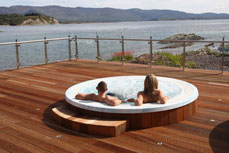
NEW PROPERTIES
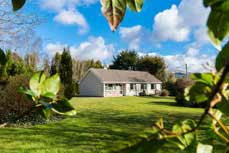
HOLIDAY PROPERTY
DO YOU OWN a holiday property or a group of properties ?
GIFT VOUCHER
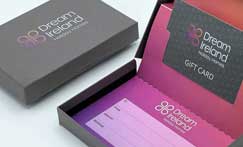
- Valid for 5 years
- Applies to all locations
Call 064 66 41170 or email us
SOCIAL MEDIA

Dreamireland Travel Guide to Ireland
Welcome to our Free Travel Guide to Ireland . Here you can find a wealth of free information on all of Ireland's most popular tourist towns, countryside retreats and bustling city areas. To begin, simply select the resort using the list below. Happy hunting!
- Free Travel Guide to Dublin City
Co. Wicklow
- Free Travel Guide to Bushmills
- Free Travel Guide to Whitehead
Co. Fermanagh
- Free Travel Guide to Enniskillen
Co. Donegal
- Free Travel Guide to Ballyliffin
Co. Leitrim
- Free Travel Guide to Enniscrone
- Free Travel Guide to Bunratty
- Free Travel Guide to Doolin
- Free Travel Guide to Doonbeg
- Free Travel Guide to Ennistymon
- Free Travel Guide to Killaloe
- Free Travel Guide to Lahinch
- Free Travel Guide to Liscannor
- Free Travel Guide to Newmarket on Fergus
Co. Limerick
- Free Travel Guide to Limerick
- Free Travel Guide to Tullow
Co. Kilkenny
- Free Travel Guide to Wallslough
Co. Waterford
- Free Travel Guide to Cheekpoint
- Free Travel Guide to Dungarvan
- Free Travel Guide to Waterford City
Co. Wexford
- Free Travel Guide to Rosslare Strand
- Free Travel Guide to Wexford Town Centre
- Free Travel Guide to Ardgroom West Cork
- Free Travel Guide to Barley Cove West Cork
- Free Travel Guide to Castlelyons
- Free Travel Guide to Clonakilty West Cork
- Free Travel Guide to Cork City
- Free Travel Guide to Kinsale West Cork
- Free Travel Guide to Youghal
- Free Travel Guide to Ballinskelligs
- Free Travel Guide to Ballybunion
- Free Travel Guide to Beaufort
- Free Travel Guide to Caherdaniel
- Free Travel Guide to Castlegregory
- Free Travel Guide to Dingle
- Free Travel Guide to Glenbeigh
- Free Travel Guide to Kenmare
- Free Travel Guide to Killarney
- Free Travel Guide to Tralee
- Free Travel Guide to Waterville
- Free Travel Guide to Clifden Connemara
- Free Travel Guide to Galway City
- Free Travel Guide to Achill Island
- Free Travel Guide to Pontoon
- Free Travel Guide to Westport
Ireland by County & Region
- tipperary south
- tipperary north
- south west ireland
- south east ireland
- west of ireland
- east of ireland
Top 25 Towns
- ballybunion
- barley cove
- galway city
- dunmore east
- cahirciveen
- waterford city
Dream Ireland , The Lodge, Kenmare, Co. Kerry, Ireland. Phone : +353 64 66 41170
Privacy Policy
Cookie Policy
Terms & Conditions
Open navigation

This spring, get outside and enjoy sights on the Wild Atlantic Way, on a refreshing hike in nature or at one of Ireland's best golf courses.
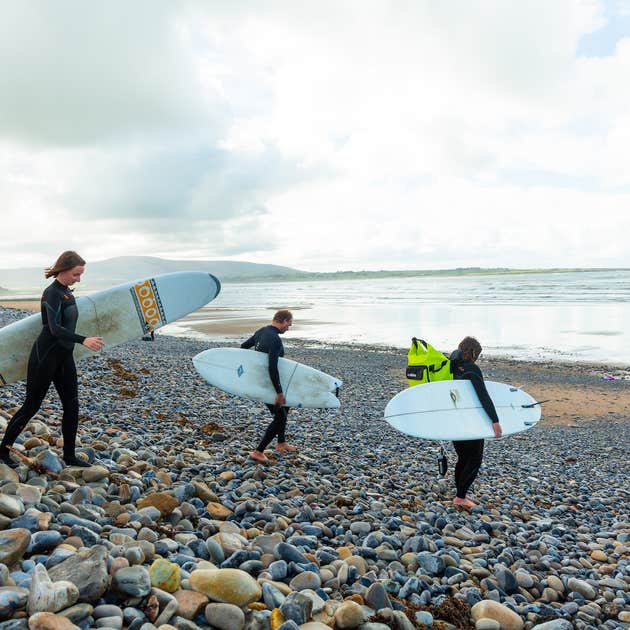
Leave the car at home and discover the perks of car-free travel in some of your favourite destinations.
Take to the coastline for a relaxing stroll along sandy strands or an invigorating water adventure.
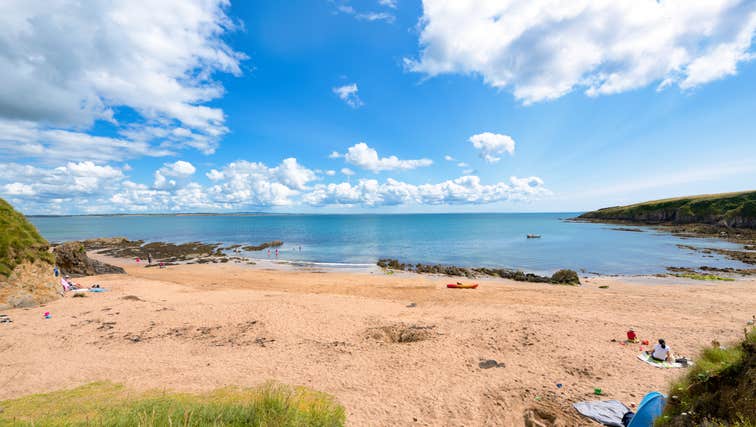
Our rugged coastline and endless sea views are some of the best things about Ireland. Head for the coast and explore beaches, lighthouses and islands as you cosy up in a seaside hideaway.
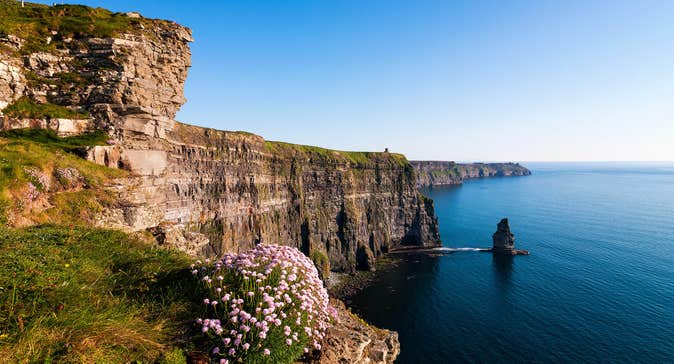
Think you have seen it all? It's only the beginning of what this island has to offer.

Subscribe now to receive destination inspiration, travel tips, upcoming events and all the best things to do around Ireland.
Ireland Travel Guides
When you think of Ireland, you’re probably picturing rain, green rolling hills, leprechauns , and pubs on every corner . While all of these things exist (except maybe the leprechauns, but who knows?), Ireland is much more than the stereotypes that many people associate with it.
Ireland Travel Guide
Ireland, despite its small size and location in Western Europe, has a diverse landscape and terrain, as well as a rich cultural heritage.
The Atlantic Ocean has carved out dramatic coastlines, leaving endless unspoiled beaches and rocky peninsulas. Meanwhile, the inland offers rolling green pastures, peat bogs, and quiet lakes. All over the country, you’ll find forts, megalithic tombs, castles , and stone villages.
All of these bear witness to Ireland’s long history, diverse culture, and rich tradition. Pubs and traditional music add to the experience, and many visitors say it’s also the Irish people’s friendliness that makes them want to return.
What Makes Ireland a Great Place to Visit?
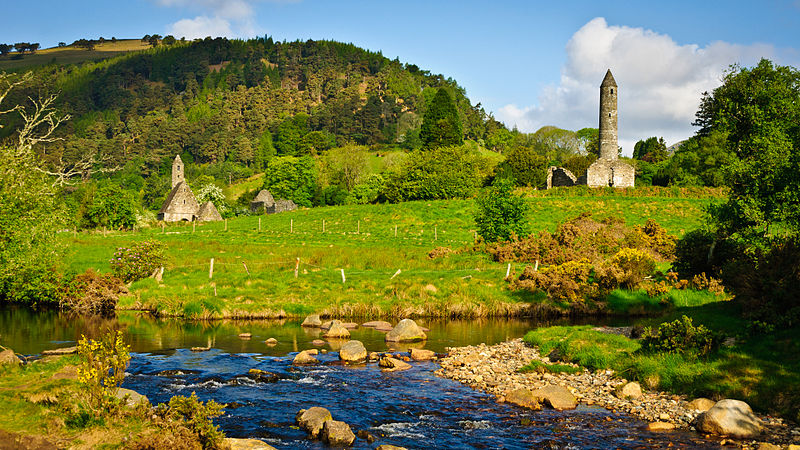
Ireland, also known as the Emerald Isle due to its lush green landscape, has attracted visitors for centuries.
With its friendly people, rugged coastlines, and troubled but fascinating history, this tiny island has something for everyone.
Here are some of the reasons why so many people want to go to Ireland or have it on their bucket list .
- Ireland has many beautiful landscapes to explore and amazing places to see.
- Ireland offers many opportunities for outdoor adventures.- In Ireland, you can rent a castle (without breaking the bank)
- Ireland has a turbulent yet fascinating history.
- Some of the best road trips and most scenic drives in the world are in Ireland.
- Some of the oldest pubs in the world can be found in Ireland.
Know Before You Go

It’s understandable why Ireland is on so many people’s bucket lists. The country has some of the world’s most beautiful natural scenery, friendly people, and charming towns and villages.
However, there are a few things you should know before visiting the Emerald Isle if you are planning a trip there. Before you travel to Ireland, it’s best to brush up on your knowledge about the country.
- Interesting Facts About Ireland
- What Is the Difference Between Belfast (Northern Ireland) and Dublin (Ireland)?
- Irish Stereotypes
- Read Books About Ireland
- Watch Movies Set in Ireland
- Learn Some Irish Jokes
Some Essential Details to Take Note Of
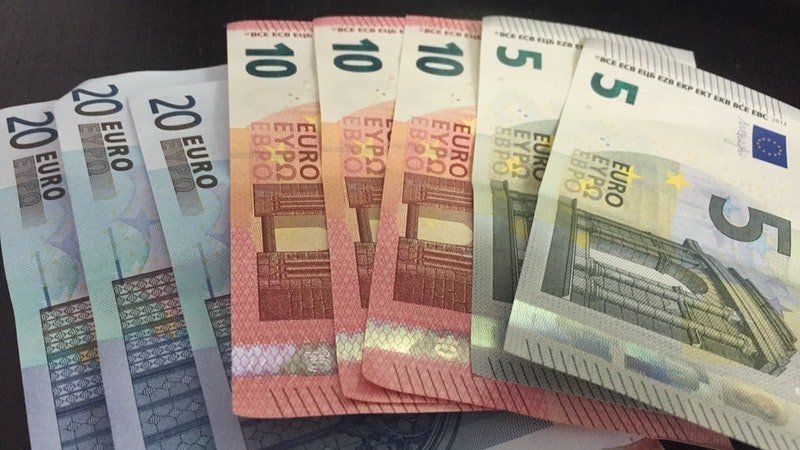
English and Irish are the official languages.
It is uncommon to hear Irish spoken outside of Gaeltacht areas on Ireland’s west coast, where it is spoken. You will see signs in both English and Irish as you travel, though. In Northern Ireland, English is also spoken.
Learn a few words in Irish Gaelic:
- Hello / Thank you
- Good morning / Good evening
- Irish Slang Words
The Euro is the Irish currency (EUR). $1.14USD 1.14qual to 1 EUR. The Pound is the currency in Northern Ireland. One US dollar is worth 0.79 pounds in the pound exchange rate.
Card machines and ATMs
Credit cards are widely accepted in Ireland. Euros are useful for small purchases, tips, and dealing with small businesses. In Ireland, finding an ATM is pretty easy. They are referred to as “Cashpoints” and can be found on the main streets of any town or city.
Power Plugs and Standard Voltage
The standard voltage in Ireland is 230 V, and the standard frequency is 50 Hz. Power plugs and sockets are type G. For hair dryers and other hot tools, investing in a universal adapter with surge protection and using a converter is recommended.
Millions of tourists visit Ireland each year, with few reports of crime and violence. Overall, the crime rate is low, so you won’t have to be concerned if you go. Take the usual precautions and you’ll be fine.
- Is Ireland Safe?
Organizing Your Trip To Ireland

So you’ve decided it’s time to travel to Ireland, which means you’re probably eager to get started planning your trip!
Ireland is a breathtakingly beautiful and fascinating country with something spectacular to see no matter where you go.
This Ireland travel guide aims to make your trip as stress-free as possible, so you can concentrate entirely on the seemingly endless green landscapes.
Keep the following in mind when planning your trip to Ireland:
- Know the requirements for your visa .
- Take a look at the travel restrictions.
- Create a detailed itinerary of your trip to Ireland. Check out this sample itinerary for a weeklong visit to Ireland.
- Make a final decision on your budget for your trip to Ireland.
- Look for the best airfare and hotel room deals .
- Make a packing list.
- Invest in travel insurance .
- Read Ireland travel tips.
Best Time To Visit
Ireland is a country that can be enjoyed year-round. There are numerous fantastic activities and sights to see throughout the year. Since your visit may be dictated by your interests or available time, we’ve prepared this handy guide for you.
The best time to visit Ireland in terms of weather and crowds is between March and May, and September to November. These months are not as crowded as summer and not as cold as winter.
Having said that, Ireland has a mild, temperate climate, and you can visit any time of year, though it can be rainy at times. In most cases, weather changes are not drastic.
Summer (June, July, and August) is the hottest season in Ireland. This is also the time when the landscapes are most vibrant and the days are the longest. It is, however, crowded, and travel costs are high.
Although some sites close in late October and temperatures drop, it remains above freezing throughout the winter . This is a wonderful time to visit Ireland because it is at its most peaceful.
Here’s our monthly Ireland travel guide to help you plan your trip to the Emerald Isle. For each month you’ll learn about the weather, the best things to do, and some helpful tips.
- Ireland in January
- Ireland in February
- Ireland in March
- Ireland in April
- Ireland in May
- Ireland in June
- Ireland in July
- Ireland in August
- Ireland in September
- Ireland in October
- Ireland in November
- Ireland in December
National Holidays in Ireland
There are many interesting festivals and holidays in Ireland that one must experience.
- Saint Patrick’s Day
- Festivals in Ireland
- Who Invented Halloween?

Dublin is the main point of arrival in the Republic of Ireland, Belfast is the main point of arrival in Northern Ireland, and Shannon, near Limerick city in County Clare, is the major airport providing direct access to the west coast. No matter where you are in the UK, Europe, Asia, or the rest of the world, there is a way to get to Ireland.
Have you started making plans for your trip to Ireland? Here’s how to get to the lovely Emerald Isle in a jiffy.
- By bus from the UK – the main bus services to Ireland are operated by National Express and Bus Éireann under the brand name Eurolines, crossing the Irish Sea via Stranraer, Holyhead, and Pembroke.
- By ferry from the UK – Ireland is accessible via many ferry routes. High-speed catamarans serve some of these routes (which can also transport cars). One of the largest operators is Stena Line.
- By train from the UK – Travelers from the United Kingdom usually take one of three routes across the Irish Sea: Stranraer to Belfast, Holyhead to Dublin/Dn Laoghaire, or Fishguard to Rosslare. Travel times are generally shorter than by coach: for example, London to Dublin takes about eight hours, while Glasgow to Belfast takes only four and a half hours.
- From the United Kingdom and Europe, by plane – There are dozens of routes to choose from, and new destinations are added frequently (and unsuccessful routes sometimes being phased out). Since there is so much competition, prices can be ridiculously low, especially if you book online. The key is to make a reservation as soon as possible.
- From the United States and Canada, by plane – Ireland is easily accessible from the United States, with nonstop flights available from several American airlines: Delta flies nonstop from Atlanta and New York (JFK) to Dublin (summer only); American flies nonstop from Chicago to Dublin; Continental flies nonstop from Newark to Belfast, Dublin, and Shannon; and US Airways flies nonstop from Philadelphia to Dublin. The Republic’s national airline, Aer Lingus, operates the most routes.
- From Africa, Asia, Australia, New Zealand, and other parts of the globe, by plane – Flights from these areas typically pass through London or another European or Gulf city with nonstop flights to Ireland, such as Frankfurt or Abu Dhabi.

Learn more about the major airports in Ireland
Airport Transfers
Flying to Ireland soon? Here are guides to getting from Dublin or Belfast airports to their respective city centers.
- Dublin Airport to City Center
- Shannon Airport to Major Cities in Ireland
- Belfast Airport to City Center
Getting Around In Ireland
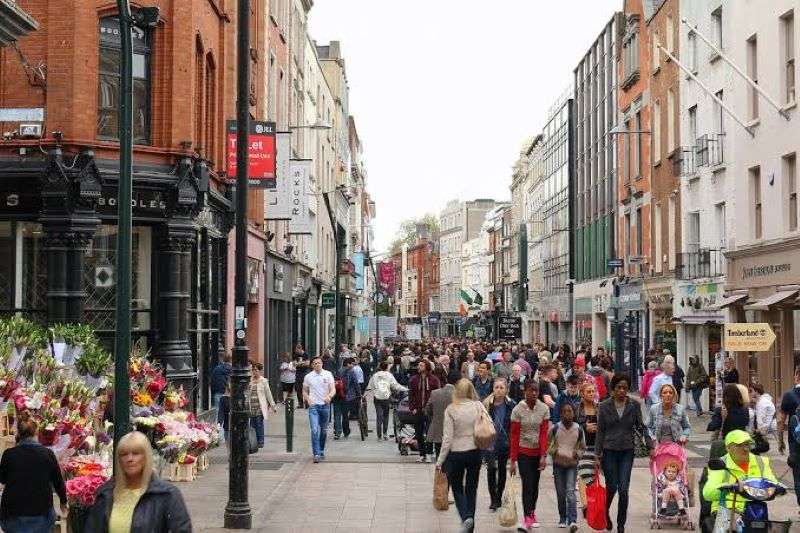
You won’t need a car if you stay in the capital cities of Dublin and Belfast. Both cities are small enough to walk around and have excellent public transportation systems.
Although private coach buses connect the major towns, renting a car and driving is a good idea if you want to see rural Ireland or have more flexibility in your schedule.
If you want to take a road trip around Ireland, keep in mind that the country drives on the left, and automatic cars are uncommon, so plan ahead of time.
The following guides will help you how to get around Ireland’s cities, covering everything from navigating the largest metro areas to traveling from one city to another.
- Getting Around Dublin
- Getting Around Belfast
- Dublin to Cork
- Dublin to Limerick
Places To Visit In Ireland

Some may believe that on such a small island, there isn’t much to see or do. Those who do go to Ireland, on the other hand, will find a plethora of hidden gems – from stunning sceneries to historic places.
You might even meet some animals that are native to Ireland ! Whether you’re a nature lover or an adrenaline junkie, a history buff, a literature buff, or a fan of Irish bands , there’s something for you here.
To show what Ireland has to offer, the following locations have been divided into three categories.
Regardless of your interests, you can rest assured that these are the best places to visit in Ireland. You can’t go wrong with any of them if all you want to do is have a good time!
- Ireland Counties
- Best Towns and Cities in Ireland
- Dublin, the Capital City
- Dublin Itinerary
- Gardens and Parks in Dublin
Natural Wonders of Ireland
- National Parks in Ireland
- Lakes in Ireland
- Beaches in Ireland
- Waterfalls in Ireland
- Best Places to see the Northern Lights in Ireland
Day Trips in Ireland
- Day Trips from Dublin
- Day Trips from Belfast
- Day Trips from Galway
- Day Trips from Cork
- Day Trips from Killarney
- Day Trips from Limerick
Best Attractions in Ireland
- Skellig Islands
- The Cliffs of Moher
- The Slieve League
- Famous Landmarks
Northern Ireland Attractions
There are many places to visit in Northern Ireland , below are some of the best places to visit.
- Dark Hedges
- Game of Thrones Filming Locations
- Giants Causeway
- Titanic Belfast
Things To Do In Ireland

Belfast Castle
From its rich Celtic culture to the breathtaking beauty of its diverse landscapes, Ireland is a travel destination that lives up to its almost mythic reputation.
The Emerald Isle is truly green, the scenery is breathtaking, and the people are warm and friendly. Despite its small size, crowded cities, and sprawling suburbs, Ireland has stretches of roads and trails where visitors can feel as if they have the entire island to themselves.
Those seeking a more social travel experience need only enter a local pub to feel at ease. Ireland enchants every visitor, whether they stay in an ancient castle, cycle along a coastal headland, or visit a world-class museum to see Celtic artifacts.
The island of Ireland is divided into two parts: the Republic of Ireland and Northern Ireland, which is part of the United Kingdom. This guide on the best things to do in Ireland is a comprehensive list that includes both Irelands.
Road Trips in Ireland
- Wild Atlantic Way
- Scenic Drives in Ireland
Hiking in Ireland
- Scenic Hiking Trails in Galway
Visiting Castles in Ireland
- Best Castles in Ireland
- Best Castles in Galway
- Best Castles in Dublin
- Best Castles in Northern Ireland
- Haunted Castles in Ireland
Museums in Ireland
- Best Museum in Dublin
- Galway City Museum
- Guinness Storehouse
Ireland Bucket List
- Learn some Irish Dance and a few Irish Songs
- Surfing in Ireland
- Playing Golf in Ireland
What To See and Do in Each County
Planning to explore the rest of Ireland after spending time in Dublin? Here’s what to expect when it comes to attractions and destinations in other counties in Ireland.
- Things To Do In Antrim
- Things To Do In Clare
- Things To Do In Cork
- Things To Do In Donegal
- Things To Do In Down
- Things To Do In Dublin
- Things To Do In Galway
- Things To Do In Kerry
- Things To Do In Kilkenny
- Things To Do In Laois
- Things To Do In Limerick
- Things To Do In Louth
- Things To Do In Mayo
- Things To Do In Meath
- Things To Do In Shannon
- Things To Do In Sligo
- Things To Do In Tipperary
- Things To Do In Westmeath
- Things To Do In Wicklow
Where To Stay
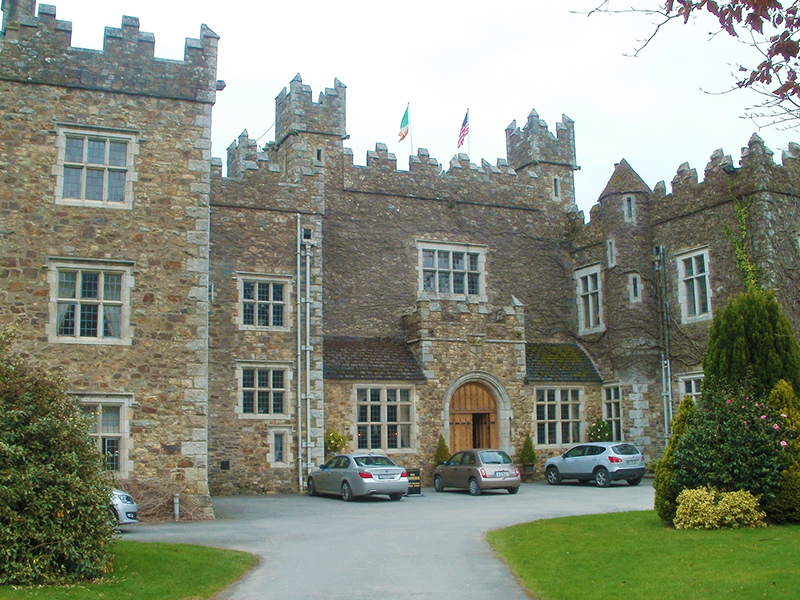
The majority of flights into and out of Ireland pass through Dublin, which is an excellent place to spend a few days. If you want to see the city on foot, stay in the city center.
You may be ready to explore the rest of Ireland after a couple of nights in Dublin. Many visitors travel south to Cork or Limerick, using these cities as a base for exploring the surrounding small towns and villages.
Belfast, the capital of Northern Ireland, is also a thriving city that serves as a gateway to the stunning Antrim coast. Alternatively, you could fly from Dublin to Galway and spend your days exploring the towns along the Wild Atlantic Way.
Whether you prefer the sea, the city, or the wilderness, or are looking for something for history buffs, romance seekers, families, or groups, our selection has something for you.
Where to Stay in Ireland
- Where To Stay In Athenry
- Where To Stay In Castlebar
- Where To Stay In Cobh
- Where To Stay In Cork City
- Where To Stay In Dingle
- Where To Stay In Doolin
- Where To Stay In Dublin
- Where To Stay In Galway
- Where To Stay In Howth
- Where To Stay In Killarney
- Where To Stay In Kinsale
- Where To Stay In Lahinch
- Where To Stay In Limerick City
- Where To Stay In Londonderry
- Where To Stay In Portlaoise
- Where To Stay In Shannon
- Where To Stay In Sligo
- Where To Stay In Tuam
- Where To Stay In Wexford
- Best Castle Hotels in Ireland
Glamping in Ireland
- Glamping in Cork
- Glamping in Donegal
- Glamping in Galway
- Glamping in Kerry
- Glamping in Wicklow
- Glamping in Northern Ireland
Eating in Ireland

Travelers do not typically visit Ireland because of its excellent cuisine. Just, like traditional British cuisine, Ireland does not have the same reputation for great food as France or Italy.
Traditional Irish cuisine, however, has enjoyed a renaissance in recent years, thanks to a renewed interest in fresh, local ingredients.
There is a huge opportunity for locally grown produce as well as some of the best beef, pork, and lamb in the world, thanks to the verdant green hills and pastures.
There’s also some excellent seafood available, and it’s not just fish and chips. There’s also more to Irish cuisine than meat, potatoes, and cabbage.
So, what are the best Irish foods to try and where can you find them? Here are some helpful guides and suggestions for eating in Ireland.
Foods to Try in Ireland
- Irish Desserts
- Irish Breakfast Food
- Traditional Irish Foods
Best Restaurants
- Affordable Restaurants In Dublin
- Best Restaurants In Belfast
- Best Restaurants In Cork
- Best Restaurants In Galway
Drinking in Ireland
Guinness and whiskey are well-known throughout the world, and Ireland has a well-deserved reputation as a place to enjoy a drink or ten. Every town and city has at least one, if not several, pubs, and visiting one or more of them is the best way to learn about the country and its people.
Are you planning on going on pub crawls or taking in the Irish nightlife while you’re in Ireland? Here are some pointers and suggestions to make this a more pleasurable experience.
Drinks To Try in Ireland
- Best Irish Beers
- Best Irish Drinks To Try
Best Bars and Pubs in Ireland
- Best Pubs In Dublin
- Best Pubs In Belfast
- Best Pubs In Dingle
- Best Pubs In Galway
- Best Pubs In Killarney
- Best Pubs In Kinsale
- Best Pubs In Kilkenny
- Drinking Age and Laws in Ireland
Travel Tips

As you plan your visit to Ireland, here are more things to consider:
- Tipping in Ireland is at the discretion of the customer and is usually around 10% in restaurants and 10% for table service in pubs.
- Traveling in Ireland is generally safe, but be wary of pickpockets and car thefts, particularly in urban areas. The police are known as the Garda, and the number for emergency services is 999.
- As previously stated, always be prepared for a sudden change in weather—even in the summer, a raincoat and sweater will come in handy.
Are you sure you want to leave the feed?
Oops... something went wrong!
Looking for inspiration? Planning a trip? Or just want to scroll yourself happy? We'll show you an Ireland that's tailor-made for you.
- #Landscapes
- #CultureandHeritage
- #OutdoorActivities

Oops... no internet connection
While offline, you can still add items to My board. New travel reccomendations will only show up once you’re back online.
See what Ireland has in store for you
Items without a physical location are not shown in map view.
Looks like your board is empty
Look out for the little heart icon around Ireland.com. Simply tap the heart to add items to your board!

Board settings
Collection cover image.
Visible to people you share your board with

Share board
Share a link to your My Ireland board and inspire friends, fellow travellers and family. Only you can add or remove items from your board.

Sign in Sign up Forgot your password?
Create an account.
Access My Ireland across all your devices by logging in.
Sign up Not got an account?
Terms of use | Privacy policy
Login Got an account?
Location access
- View offers and deals nearby
- Find travel inspiration based on your location
- Get local weather forecasts and essential information
Enable location access
Location access on ios.
- 1 Open the website settings for this website in your browser.
- 2 Select Location settings.
- 3 Choose Allow.
- 1 Open the My Ireland website.

- 2 Select the icon below.

- 3 Select Website Settings.

- 4 Change Location status to Allow.

Notifications
Travel times.
Tell us when you are travelling to Ireland and we'll show you tailored reccomendations during of your trip.

- Recommended events during your stay
- Helpful travel reminders and updates
You have unsaved changes. Save before leaving?
We take your privacy very seriously and only ever process your data with your permission. If possible this is handled anonymously and we will never store your data for longer than is required. For more information on how we handle your personal data, please read our privacy policy.
Remove data
To securely remove all data associated with your profile, please contact our Data Protection Officer.
Reset your board
This will remove all the items you have previously liked from your board. Please note, you can’t undo this action.
Are you sure you want to reset your board?
- Created date 19 July 2023
Delete account
Sorry you’re leaving. Just a reminder – if you delete your account, you won’t be able to post in Community. And it’s permanent so you can’t undo it in the future.
Delete your account
- No. Keep my account
- Yes. Delete my account

Our brochures
Inspiration to download and keep

Ireland in your inbox
Sign up to receive free email newsletters from Tourism Ireland, including regular tailored updates on holiday ideas and insider tips.
We will use your email address to send you personalised content straight to your inbox based on how you interact with this website and our advertisements on other websites.
Something went wrong...
Success! Thank you for subscribing to our Newsletter!
I understand that by signing up, I will receive personalised email content based on my use of Tourism Ireland’s website, emails and Tourism Ireland’s advertising on other websites, cookies and tracking pixels. You can unsubscribe at any time by clicking 'unsubscribe' in our emails. Find out more information on "How we handle your personal data" in our privacy policy .
Discover the best of Ireland by reading our range of digital brochures with plenty of inspiration, maps and useful tips for your trip.*
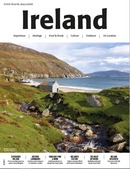
We use your postal address to send you the brochures you order.
We may use your email address should we need to contact you in relation to your brochure order. If you also sign up to our newsletters, we will use your email address to send you personalised content by email.
We will only use your telephone number to contact you should there be a problem or query with your order.
*These guides were produced prior to the COVID-19 outbreak so some information may have changed.
For more information on how we handle your personal data please see our Privacy Policy
Travel Guide Ireland
Book your individual trip , stress-free with local travel experts
- roughguides.com
- Travel guide
- Local Experts
- Travel Advice
- Accommodation
Plan your tailor-made trip with a local expert
Book securely with money-back guarantee
Travel stress-free with local assistance and 24/7 support
Over the past three decades, Ireland has transformed itself with quiet determination. Gone - or certainly on its way out - is the image of a conservative, introspective, rural set of nations. The infamous unrest and violence, between the Republic (Éire) and Northern Ireland (as part of the United Kingdom), have faded away. An outward-looking Ireland has stepped forward, energised by cities no longer weighed down by the Troubles.
Brief history
Facts about ireland, where to go in ireland, outdoor activities in ireland, hurling and gaelic football, the midlands: westmeath, longford, offaly and laois, belvedere house, northern westmeath, athlone and around, some history, birr castle, slieve bloom, the four provinces, in search of the authentic irish pub, tailor-made travel itineraries for ireland, created by local experts.

11 days / from 1926 USD
Fascinating Ireland & North Ireland
Ireland is one of the most popular destinations for tourists: its rich cultural heritage, the beautiful landscapes and the laid-back lifestyle attract many travelers. Visit the famous Giant's causeway, fascinating Cliffs of Moher, the Ring of Kerry and many more highlights.

8 days / from 725 USD
Spectacular Ireland
This itinerary will give you a chance to discover the most spectacular places in Ireland within eight days. Visit the Killarney National Park and the South West Coast of Ireland. Travel back in time during your visit on the Aran Islands and cross the region of Connemara.

6 days / from 486 USD
Game of Thrones – Northern Ireland
The Seven Kingdoms await you in this Game of Thrones adventure. The incredible landscapes of Northern Ireland make up an enchanting array of fortresses, heart-stopping cliffs and countless small villages steeped in history. A trip to the universe of Game of Thrones is about to begin!
Of course, it's not called the Emerald Isle for nothing; among the romantic preconceptions visitors bring to Ireland, it is their expectations of the landscape that are most likely to be fulfilled. Travel to Ireland and you'll discover an uncommon geological richness and the warming effect of the Atlantic produce an astonishing diversity of terrain on this small island, which is splashed throughout with lakes and primeval bogland.
In the east, the crumpled granite of the Wicklow Hills sits in utter contrast to the horse-grazing plain of the Curragh just a few kilometres away, and in Connemara on the west coast, you can walk from beach to mountain to fen, from seaweed-strewn inlet to lily-covered lough, in a matter of hours. Coupled with the unhurried nature of rural living, this scenic array encourages leisurely investigation, especially on foot or by bicycle.
With the richest store of mythological traditions in northern Europe, the island of Ireland adds further interest to the landscape through the sacred associations of so many of its physical features – few counties do not shelter a pile of stones called “Diarmuid and Gráinne’s Bed”, where the star-crossed lovers are said to have slept together on their flight from the great warrior Fionn Mac Cumhaill. But there’s much more than the resonance of place names to this treasure chest of myths, which still has a life of its own in the tradition of storytelling. The great body of Irish literature, though much of it concerns the dysfunction of real life, is often spiked with wild, fantastical imaginings, from Swift, Sterne and Wilde through to Joyce, Flann O’Brien and Seamus Heaney. And unlikely stories and surreal comedy are integral elements of the craic , the talking therapy of Ireland’s pubs. Meanwhile, in the rich culture of traditional music, the two forms that are most likely to enrapture an audience – whether singing along or in silent appreciation – are ballads and sean-nós (“old-style” Irish-language singing), which recount tales of love, history and humour.
Many of Ireland’s mythical deities were reinvented by the Church after the tenth century as historical personages, which can make interpretation of the country’s abundance of historic sites more difficult, especially its enigmatic but awe-inspiring prehistoric tombs, stone circles and hill forts. There are few remnants of the Church itself from the so-called “Dark Ages”, when the monasteries of Ireland clung on as great centres of learning, but their elaborate craftsmanship is evident in surviving illuminated manuscripts. Stone began to be used for religious buildings only in the ninth century, and the country is strewn with fine churches, distinctive round-towers and high crosses from later periods. Doughty castles and tower houses are reminders of the unrest and oppression that followed the twelfth-century Anglo-Norman invasion, while numerous stately homes from the eighteenth and nineteenth centuries attest to the power of the Protestant Ascendancy, alongside Neoclassical institutions in the cities and Dublin’s extensive Georgian areas.
There is little vernacular architecture of note, however, thanks to centuries of subjugation as the laboratory for British colonialism. The poverty experienced by ordinary Irish people under foreign rule was not immediately righted by Independence in 1921, and for most of the twentieth century the economy continued to stagnate. The century’s final decade, however, saw a remarkable upswing in Ireland’s fortunes.
The North, though still blighted by sectarianism and gangsterism, received massive British and European investment and achieved far greater stability after the 1998 Good Friday Agreement. So rapid was the Republic’s economic growth during the 1990s that it was christened the Celtic Tiger and, for the first time since the Great Famine of the 1840s, immigration began to outstrip emigration. Greater prosperity necessitated an influx of migrant workers, mostly from Eastern Europe and Africa, which presented new challenges to the South’s Catholic homogeneity and the rigid duality of the North. Many Irish people returned from abroad, too, bringing fresh ideas and vibrancy to commerce and culture, after the authoritarianism that followed Independence. However, the global economic crisis of 2008 hit Ireland particularly severely, bringing widespread economic hardship and drastic reductions in public spending, especially in the South. For the visitor, this has meant welcome cuts in hotel and restaurant prices, but in general terms it’s still far from clear what social and cultural effects the crisis will have in the long run.
- Ireland’s landmass has a total area of 84,412 square kilometres, with its coastline stretching for 3152km. Its longest river is the Shannon (358km), largest lake Lough Neagh (387 square kilometres) and its highest point is Carrauntoohil in Kerry (1038m).
- Since 1921 the country has been divided into what is now called the Republic of Ireland, consisting of 26 counties, and Northern Ireland, subject to devolved British rule, which comprises six counties.
- The Republic of Ireland’s population is roughly 4.4 million, with 1.7 million residing in the Greater Dublin area, while Northern Ireland’s population is approximately 1.8 million, with some 650,000 occupying the Greater Belfast area.
- The UK’s 2001 Census reported that 44% of Northern Ireland’s population is from a Catholic background and 53% from a Protestant background, while the Republic’s 2006 Census revealed that 88% of its population is Catholic.
- Irish is the national language of the Republic, according to the constitution, with English recognized as a second official language. However, only around 15% of the population has a good competence in Irish.
Dublin is the Republic’s main entry-point, a confident capital whose raw, modern energy is complemented by rich cultural traditions, and which boasts outstanding medieval monuments and the richly varied exhibits of the National Gallery and National Museum. South of the city, the desolate Wicklow Mountains offer a breathtaking contrast to city life.

Book tickets and tours in Dublin
If you arrive on the west coast at Shannon Airport in County Clare, Ireland’s most spectacular landscapes lie within easy reach. Clare’s coastline itself rises to a head at the vertiginous Cliffs of Moher, while inland lies The Burren, a barren limestone plateau at odds with the lush greenery characteristic of much of Ireland. To Clare’s south, Limerick’s Hunt Museum houses one of Ireland’s most diverse and fascinating collections.
Book Cliffs of Moher tickets and tours
County Kerry, south of Limerick, features dazzling scenery, an intoxicating brew of invigorating seascapes, looming mountains and sparkling lakes. Though the craggy coastline traversed by the Ring of Kerry is a major tourist attraction, it’s still relatively easy to find seclusion. In County Galway, to Clare’s north, lies enthralling Connemara, untamed bogland set between sprawling beaches and a muddle of quartz-gleaming mountains; in contrast, university cities such as Galway and Limerick provide year-round festivals and buzzing nightlife. Further north, Donegal offers a dramatic mix of rugged peninsulas and mountains, glistening beaches and magical lakes.
Book tickets and tours in Limerick
Dotted around the west coast are numerous islands, providing a glimpse of the harsh way of life endured by remote Irish-speaking communities. The Arans are the most famous – windswept expanses of limestone supporting extraordinary prehistoric sites – but the savagely beautiful landscape of the Blasket Islands, off Kerry’s coast, is equally worthy of exploration.
On Ireland’s southern coast, Cork’s shoreline is punctuated by secluded estuaries, rolling headlands and historic harbours, while Cork city itself is the region’s hub, with a vibrant cultural scene and nightlife. To Cork’s east, Waterford city houses the wondrous Viking and medieval collections of Waterford Treasures, while, in Ireland’s southeastern corner, Wexford’s seashore features broad estuaries teeming with bird life and expansive dune-backed beaches.
Book things to do in Cork
Inland the Republic’s scenery is less enchanting, its Midland counties characterized by fertile if somewhat drab agricultural land, as well as broad expanses of peat bog, home to endangered species of rare plants. However, there is gentle appeal in Ireland’s great watercourse, the Shannon, with its succession of vast loughs, and the quaint river valleys of the southeast.
Numerous historic and archeological sites provide fine alternative attractions. The prehistoric tomb at Meath’s Newgrange and the fortress of Dun Aengus on Inishmore are utterly mesmerizing; County Cork features many stone circles; and there’s a multitude of tombs and ring forts across the west coast counties. Stunning early Christian monuments abound, too, including those located on Skellig Michael and the Rock of Cashel and atmospheric sites at Clonmacnois, Glendalough and Monasterboice. Of more recent origin, the Anglo-Irish nobility’s planned estates, developed during the eighteenth and nineteenth centuries around impressive Neoclassical mansions, are visible across Ireland.
Much of Northern Ireland’s countryside is intensely beautiful and unspoilt, though most of the major attractions lie around its fringes. To the north are the green Glens of Antrim and a coastline as scenic as anywhere in Ireland, with, as its centrepiece, the bizarre basalt geometry of the Giant’s Causeway. In the southeast, Down offers the contrasting beauties of serene Strangford Lough and the brooding presence of the Mourne Mountains, while, to the west, Fermanagh has the peerless lake scenery of Lough Erne, a fabulous place for watersports, fishing and exploring island monastic remains. Evidence of the plantation is also provided by planned towns and various grand mansions, often set in sprawling, landscaped grounds.
To get to grips with the North’s history, a visit to its cities is essential: Belfast, with its grand public buildings, was built on the profits of Victorian industry; Derry has grown around the well-preserved walls of its medieval antecedent; and the cathedral town of Armagh is where St Patrick established Christianity in Ireland. Further insights are provided by tremendous museums, including Derry’s Tower Museum and Down’s Ulster Folk and Transport Museum.
Discover more places in Ireland

- Cork Travel Guide
- Donegal Travel Guide
- Dublin Travel Guide
- Galway Travel Guide
- Kerry Travel Guide
- Kilkenny, Carlow and Wexford Travel Guide
- Limerick and Clare Travel Guide
- Louth, Monaghan and Cavan Travel Guide
- Sligo, Leitrim and Roscommon Travel Guide
- Tyrone and Fermanagh Travel Guide
- Waterford and Tipperary Travel Guide
- County Mayo
Hurling and Gaelic football are among the fastest and most physical sports in the world, and well worth catching on your travels, whether on TV or, preferably, live. Rugby and soccer are also widely followed, while going to the races is a great day out, with less of the snobbery sometimes found in Britain. Golf (see Outdoor activities) is also hugely popular north and south of the border.
Both Gaelic football and hurling, Ireland’s two main indigenous sports, are played at a rollicking pace on huge pitches, 140m long and 80m wide, between teams of fifteen; goalposts are H-shaped, with three points awarded for a goal, when the ball goes under the crossbar into the net, and a point when it goes over the crossbar. Over two thousand clubs in villages and parishes all over Ireland vie for the privilege of reaching the club finals, held on St Patrick’s Day at 80,000-seater Croke Park in Dublin, one of the largest stadiums in Europe (see Croke Park and the GAA Museum), while the more popular and prestigious intercounty seasons begin with provincial games in the early summer, reaching their climax in the All-Ireland County Finals in September, also at Croke Park. Details of all fixtures for hurling and Gaelic football can be obtained from the Gaelic Athletic Association (wwww.gaa.ie), while there’s always something of interest on wwww.anfearrua.ie, an independent fans’ forum.
Hurling is played with a leather slíothar, similar in size to a hockey ball, and a hurley (or camán), a broad stick made of ash that is curved outwards at the end. The slíothar is belted prodigious distances, caught and carried on the flattened end of the player’s hurley. It’s a highly skilled game of constant movement and aggression that does not permit a defensive, reactive style of play. Cork, Kilkenny and Tipperary are the most successful counties, while Clare, Galway, Offaly and Wexford have emerged in the modern era. No county from the North has ever won an All-Ireland Final, though the sport is very popular in the Glens of Antrim and parts of the Ards Peninsula in County Down. Camogie, the women’s version of hurling, is becoming increasingly popular, and is also well worth watching. Dublin has won the most camogie All-Irelands, though the most successful teams in the modern era have been Cork, Kilkenny and Tipperary.
Book tickets and tours in Kilkenny
Gaelic football has similarities with both rugby and association football, but its closest relation is Australian Rules Football; indeed every autumn, Australia play Ireland in a hurly-burly series of “international rules” matches that are known for their frequent brawling. The round Gaelic ball, which is slightly smaller than a soccer ball, can be both kicked and caught. However, running with the ball is only permitted if a player keeps control by tapping it from foot to hand or by bouncing it, and throwing is not allowed – the ball must be “hand-passed”, volleyball-style. Whereas hurling’s strongholds are in the southern counties of the island, footballing prowess is more widely spread – Kerry is the most successful county, followed by Dublin, then Galway, but there are plenty of strong teams in Ulster at the moment, notably Tyrone.
Rugby union and soccer
Rugby union and soccer are very popular in Ireland and tickets for international matches, especially for rugby, can be hard to come by. The Republic’s home soccer matches (wwww.fai.ie) and Ireland’s rugby matches (wwww.irishrugby.ie) are played at Dublin’s recently rebuilt Aviva Stadium (formerly Lansdowne Road). Northern Ireland’s soccer matches (wwww.irishfa.com) are played at Windsor Park, Belfast. For the international rugby team, which is a joint Republic–Northern Ireland side, the main event of the year is the Six Nations Championship, a series of international games played in February and March against England, France, Wales, Scotland and Italy. You’re more likely to get tickets, however, for matches featuring the four provinces, Munster (which includes Irish rugby’s natural heartland, Limerick), Leinster, Connacht and Ulster, in the Europe-wide Heineken Cup or Amlin Cup or in the Magners League.
Soccer is played semi-professionally in both the North and the Republic, organized into the Carling Premiership and the Airtricity League respectively. Both international teams field most of their players from the English leagues; Manchester United and Liverpool are the most popular clubs among Irish fans. Glasgow Celtic are also popular both north and south, Rangers in the North, with support following Catholic and Protestant divisions, respectively.
Going to the races is a hugely popular and enjoyable day out in Ireland. A good place to get a sense of the Irish passion for horses is the National Stud in Kildare, while for details of all meetings, go to Horse Racing Ireland’s websitewwww.goracing.ie. The Irish Grand National is run at Fairyhouse in County Meath on Easter Monday Easter Monday, followed in April by the five-day Irish National Hunt Festival at Punchestown in County Kildare; at the Curragh, the classic flat-race course in Kildare, the Irish 1000 Guineas and 2000 Guineas are held in May, the Irish Derby in late June or early July, the Irish Oaks in July and the Irish St Leger in September. Dublin’s race course is Leopardstown, while notable local meetings are held at Galway, Killarney, Listowel, Sligo and Downpatrick. One local oddity worth mentioning is the meeting at Laytown in County Meath, the last remaining beach racing under Jockey Club rules, held once a year when the tides are at their lowest.
Ireland is a great place for getting out and about. Cycling is one of the best ways to appreciate the quiet pleasures of the Irish countryside, while walkers can take advantage of generally free access across much of the countryside and a number of waymarked trails. With over 120 sailing and yacht clubs, plenty of lakes, rivers and sheltered coastline to explore and some great beaches for surfers, there are many opportunities for watersports enthusiasts, too. The North is covered bywwww.outdoorni.com, a comprehensive guide to outdoor activities and adventure sports.
Signposted cycling trails in the Republic include the Beara Way and the Sheep’s Head Cycling Route in Cork, and the Kerry Way. Trails in the North, however, are better documented and promoted: for detailed information on the many routes here, the best places to start are wwww.cycleni.com and wwww.sustrans.org.uk. They include the Kingfisher Trail (wwww.greenbox.ie or wwww.cycletoursireland.com), which also stretches into Leitrim and Cavan. Other cross-border routes include the recently signposted, 326-kilometre North West Trail, mainly on quiet country roads through Donegal, Tyrone, Fermanagh, Leitrim and Sligo.
Walking and mountain climbing
There are dozens of waymarked walking trails in the Republic, ranging from routes through or around mountain ranges, such as the Wicklow Way, the Táin Trail, the Slieve Bloom Way and the Western Way, to walks around entire peninsulas, like the Sheep’s Head Way, the Beara Way, the Kerry Way and the Dingle Way. The Ulster Way in the North, the oldest and longest waymarked walking trail in Ireland, has recently been redeveloped as a 625-mile circuit of the whole province, taking in the Giant’s Causeway, the Sperrins and the Mournes; it’s now divided into link sections, which can be skipped by taking public transport, and quality sections, and further development is planned. For information on these trails in the Republic, go to wwww.walkireland.ie, which also has details of day walks and of the many walking festivals around the country. In the North, wwww.walkni.com has comprehensive information on all aspects of walking. Some councils and local tourist offices have produced helpful map guides for the main routes too, but you should always get hold of the relevant Ordnance Survey map and carry a compass.
Other walking highlights include the ascents of Croagh Patrick in County Mayo and of Carrauntoohil, for more experienced walkers, in County Kerry, the easily accessible Bray–Greystones walks in County Wicklow and just about anywhere in Connemara, notably the excellent, new Diamond Hill trail in the national park; not to mention walks in the Wicklow and Killarney national parks.
Mountaineering Ireland, an organization that covers hill-walking and rambling, as well as climbing, maintains a compendious website (wwww.mountaineering.ie). Other useful walking websites include wwww.simonstewart.ie and wmountainviews.ie, while wwww.climbing.ie is devoted to rock climbing. Guided walking tour operators are available on wwww.discoverireland.ie and wwww.discovernorthernireland.com.
If you need help in a real emergency on the mountains, call t999 or t112 and ask for mountain rescue (wwww.mountainrescue.ie).
Birdwatching, horse-riding and golf
With a wide variety of migrating flocks, including a large number of rare species, visiting its shores, Ireland is a great place for birdwatching; Wexford Wildfowl Reserve, Cape Clear and Castle Espie are especially fruitful hunting grounds. The best general contacts are wwww.irishbirding.com, Birdwatch Ireland in the Republic (wwww.birdwatchireland.ie) and, in the North, the Royal Society for the Protection of Birds (wwww.rspb.org.uk).
Horseriding, whether over the hills or along the beaches, is also a popular pastime, for both novices and experienced riders, who also have the option of multi-day trails rides. The Association of Irish Riding Establishments (wwww.aire.ie) maintains standards among riding centres in the Republic and the North and publishes details on its website.
Golf, which was probably first brought to Ireland by the Ulster Scots, attracts huge numbers of visitors every year; the Golfing Union of Ireland, based in Kildare (wwww.gui.ie), provides details of over four hundred clubs, north and south, with online booking.
Fishing and watersports
There are plenty of opportunities for sea angling and dozens of rivers and lakes for fly- and game-fishing. For information, the best places to start are the tourist-board websites, wwww.discoverireland.ie and wwww.discovernorthernireland.com. Great Fishing Houses of Ireland (wwww.irelandflyfishing.com) covers twenty or so specialist hotels and B&Bs.
Ireland’s many sailing clubs include the Royal Cork Yacht Club, established in Cobh in 1720, which is thought to be the oldest in the world. Dozens of regattas, such as Calves Week in Schull, and traditional boat festivals, such as the Wooden Boat Festival in Baltimore and Cruinniú na mBád in Kinvarra, are held every year. The most popular areas for sailing are the relatively sheltered waters of the east coast, especially in Dublin Bay; Cork Harbour and west Cork; Lough Swilly on the north coast of Donegal; Strangford Lough in County Down; and some of the larger lakes, such as Lough Derg in County Clare. For further information contact the Irish Sailing Association (wwww.sailing.ie).
Canoeing and kayaking
Inland waterways and sheltered coasts – notably in west Cork, Dingle and Waterford – also offer canoeing and kayaking opportunities, ranging from day-trips and touring to rough- and white-water racing. The Irish Canoe Union’s website covers courses and clubs in the South (wwww.canoe.ie), while the North has a more comprehensive website, wwww.canoeni.com, that includes canoe trails for multi-day touring. See also wwww.irishseakayakingassociation.org.
Surfing, windsurfing and kite-surfing
There are some superb beaches for surfing (wwww.isasurf.ie) and its spin-offs, windsurfing (wwww.windsurfing.ie for the Irish Windsurfing Association, with a list of providers; wwww.windsurfingireland.net for likely locations) and kite-surfing (wwww.kitesurf.ie for the Irish Kite-surfing Association, with a list of schools; wwww.kitesurfing.ie for likely locations). For kite- and windsurfing, some of the best spots are: Rosslare, County Wexford; Tramore, County Waterford; Castlegregory, Kerry; Rusheen Bay, County Galway; Keel Strand, Achill and Elly Bay, Belmullet, in Mayo; Lough Allen, Leitrim; and Rossnowlagh, County Donegal. Surfers head for: Garrettstown and Inchydoney, County Cork; Inch and Brandon Bay, Kerry; Lahinch, Clare; Easkey and Strandhill, County Sligo; Bundoran and Rossnowlagh, County Donegal; Portrush, Antrim; and Tramore, County Waterford.
Book things to do in Wexford
Scuba diving
Right in the path of the warm North Atlantic Drift current, Ireland offers some of the best scuba diving in Europe, notably off the rocky west coast. Information is available from the Irish Underwater Council (wwww.cft.ie) and wwww.ukdiving.co.uk.
Cathedral and colored houses in Cobh, Ireland © Giancarlo Liguori/Shutterstock
Ireland has two hugely popular, indigenous amateur sports, hurling and Gaelic football , which occupy a special place in the country’s social fabric as ancient games whose renaissance was entwined with the struggle for independence. When played at the highest level, Gaelic football is a fast, skilful and muscular sport, in which the strongest rivalry is between old adversaries Dublin and Kerry. It’s more widespread, though more recently developed, than hurling, which is said to have descended from a game played by the legendary warrior Cúchulainn. With its heartland extending in a rough, low-lying arc from Wexford to southeast Galway, hurling is an exciting, intricately skilled stick-and-ball game that’s said to be the fastest team-sport in the world. Inter-county matches grab the limelight, but the backbone of the Gaelic Athletic Association are parish clubs throughout the country, which are the heart and soul of many communities, with around 300,000 members. If you can’t get to a match yourself, the best place to get a flavour of these passionately supported games is the Croke Park GAA Museum in Dublin.
Obeying the siren call of the west coast, most foreign tourists, and indeed Irish holidaymakers, put their foot down to motor through the Midlands as quickly as possible. It’s true that you’re unlikely to want to make a comprehensive tour of the area, but if you fancy a stopover off the main radial routes out of Dublin, there are some compelling sights, and a surprisingly varied landscape, to discover.
The dairy farms of County Westmeath (Iarmhí) are interspersed with large, glassy lakes, including Lough Ennell to the south of Mullingar, the county town, on whose shores Belvedere House is well worth a short detour off the N4. Among the county’s more northerly lakes nestle the quirky gardens of Tullynally Castle and the pastoral charms of the Fore Valley, where you can poke around medieval monastic remains and be entertained by their wondrous legends. The N4 ploughs on through County Longford (An Longfort), mostly rich grasslands but blending into Ulster’s drumlin country in its northern third. In the south of the county, the Corlea Trackway Visitor Centre gives a fascinating glimpse of a prestigious but ill-fated Iron Age road-building project.
The River Shannon and its seasonal floodplain delineates most of the Midlands’ western border, running down through Athlone, a major junction town that lies on the M6, the railway and the Westmeath–Roscommon frontier. Just south of here, the major ecclesiastical site of Clonmacnois enjoys a dreamy setting above the river’s meanders and meadows. Elsewhere, County Offaly (Uíbh Fháilí) is known for its bogs, but the charming town of Birr, with its imposing castle and Georgian terraces, makes the best base in the Midlands. To its east rises the attractive bulge of Slieve Bloom, with a thick topping of blanket bog, beyond which County Laois (pronounced “leash”) is mostly lush grazing and cereal land.
These counties were mostly beyond the Pale, the enclave around Dublin that the Anglo-Normans retreated to in the fourteenth and fifteenth centuries, and indeed Offaly is named after the Uí Failí (O’Connor Faly), Irish chieftains who would attack the Pale and then retreat to their strongholds deep in the boglands. In the sixteenth century, however, this region was fairly comprehensively planted, when land was confiscated from native Irish owners and given to loyal English landlords. In 1541, Westmeath was split off from County Meath, and in 1556 Offaly and Laois were created as “King’s County” and “Queen’s County”, respectively, with the latter’s main town named Maryborough (now Portlaoise) after the current monarch. Bypassed by the Industrial Revolution, many of the planned estate-towns that were attached to these landholdings remain to this day, along with the vestiges of a slow, steady rural style of living.
Set in lush cattle-country, MULLINGAR, the county town of Westmeath, holds little of interest for visitors, except as a base for visiting Belvedere House, a Georgian mansion in a lovely setting on Lough Ennell.
The house stands in abundant gardens 5km south of Mullingar on the N52. The house was built in the 1740s by Richard Castle as a hunting lodge for Robert Rochfort, later the first Earl of Belvedere, the so-called “Wicked Earl”, whose main pastime seems to have been making life hell for his wife and brothers. In 1743 he falsely accused his wife Mary of having an affair with his brother Arthur and imprisoned her for the next 31 years at their nearby main residence, Gaulstown. It was only when the Earl died that she was released by their son, whom she no longer recognized. Meanwhile, the Earl had successfully pressed charges of adultery against Arthur, who, unable to pay the damages of £20,000, lived out his days in debtors’ prison.
The house itself, which commands beautiful views of the lake, has been painstakingly restored and authentically refurbished by Westmeath County Council. It holds some gorgeous fireplaces of carved Irish oak with Italian marble insets, but is most notable for the exquisite craftsmanship of its rococo ceilings, the work of a French stuccodore, Barthelemij Cramillion. Look out especially for the vivid depictions of the Four Winds, a fire-breathing dragon and a horn of plenty in the dining room, while the library, intended for night-time use, features sleeping cherubs wrapped in a blanket of clouds, a crescent moon and stars, and on the cornice a swirl of flowers with their heads closed.
THE GARDENS
A feud between Robert Rochfort and his other brother George was behind one of the gardens’main sights, the Jealous Wall. When George commissioned Richard Castle in the 1750s to build Tudenham House, a much larger mansion than Belvedere, just a kilometre away, the Earl of Belvedere spent £10,000 building this huge Gothic folly, three storeys high and nearly 60m long, just to block the view. Other features include a Victorian walled garden, enclosing an unusual collection of Himalayan plants, playgrounds for kids and a café in the old stable block by the entrance. Or you can just take a stroll around the extensive woodlands and lawns: the 45-minute Earl’s Trail, for example, will take you along the lakeshore and back, past an octagonal gazebo, a folly known as the Gothic Arch and a restored ice-house.
The far north of Westmeath shelters two compelling and whimsical attractions, the gardens of Tullynally Castle and the Seven Wonders of the Fore Valley, near CASTLEPOLLARD, a pretty eighteenth- and nineteenth-century village laid out around a large triangular green.
Tullynally Castle
A little over a kilometre northwest of Castlepollard on the Granard road, Tullynally Castle has been the seat of the Anglo-Irish Pakenhams, later Earls of Longford, since the seventeenth century. Remodelled as a rambling Gothic Revival castle to the designs of Francis Johnston in the early 1800s, it remains the family home, open only to prebooked group visits (minimum 25 people) and for occasional concerts. The extensive gardens, however, and tea rooms are open to casual visitors in the summer. Terraced lawns around the castle overlook parkland, laid out by the first Earl of Longford in 1760. From here winding paths lead through the woodland to lakes, a walled garden with a 200-year-old yew avenue and a limestone grotto, as well as a Chinese garden complete with pagoda and Tibetan garden of waterfalls and streams.
The Fore Valley
To the east of Castlepollard off the R195 Oldcastle road, the Fore Valley is a charming, bucolic spot, sheltered between two ranges of low, green hills and dotted with some impressive Christian ruins. Around 630, St Fechin founded a monastery here, which had grown into a community of three hundred monks by the time he died in 665. Over the centuries since, various sites in the valley have become associated with Fechin’s miraculous powers, known as the Seven Wonders of Fore, though in truth they’re far from jaw-dropping – it’s unlikely that you’ll be converted to this brand of folk religion, but the wonders add some fun and interest to an exploration of the locale. The historical and supernatural sites are all within walking distance of the village of FORE at the heart of the valley.
The Seven Wonders
To the west of the village, on the south side of the road, stands St Fechin’s Church, now roofless, the oldest remaining building in the valley, dating probably from the tenth century. Over its main entrance there’s a massive lintel inscribed with a small cross-in-circle: the first wonder, the stone raised by St Fechin’s prayers. Up the slope and across from the church, you’ll find the Anchorite’s Cell, a fifteenth-century tower to which the mausoleum chapel of the Greville-Nugent family was added in the nineteenth century. Practising an extreme form of asceticism that was popular in the early and high Middle Ages, anchorites would stay in the tower, meditating and praying alone, with food brought to them by local people, until they died. Inside the chapel, an inscription commemorates the last hermit of Fore, and probably of all Ireland, Patrick Beglin, whose body is “hidden in this hollow heap of stones” – the second wonder, the anchorite in a stone. Like the other hermits, Beglin had vowed to remain in the cell until he died: in 1616, he fell trying to climb out, and broke his neck – thus enacting his promise.
Back down the slope and across the road you’ll see the water that will not boil, a holy well known to cure headaches and toothaches, where in the nineteenth century rites were performed on St Fechin’s Day (January 20). In the spring stands a dead ash tree, gaily festooned with sweet wrappers, stockings, knickers and coins (which caused the copper poisoning that killed the tree) – the fourth wonder, the wood that will not burn. Nearby, a stream that runs underground from Lough Lene to the south resurfaces at the ruined St Fechin’s Mill – the mill without a race.
A couple of hundred metres across the marshy valley floor rise the substantial but compact remains of Fore Priory – the monastery built on a bog. It was erected in the early thirteenth century, one of very few in Ireland to follow the rule of St Benedict, the fifth-century Italian ascetic. Attached to the central cloister, of which several Gothic arches remain, you’ll find the church to the north, the chapterhouse to the east, with the dormitory above, and the refectory to the south. A little away from the main buildings, up a small slope, there’s a circular, thirteenth-century columbarium, where the monks kept doves, an efficient source of meat in the Middle Ages.
The seventh wonder is a little removed from the others to the south of the village – ask for directions at the coffee shop. A short woodland walk will bring you down to the attractive shore of Lough Lene, which is dotted with small, green islands. A stream flows out of the lake, apparently in the wrong direction, passing under an overgrown arched bridge, before disappearing into a sink hole (to emerge at St Fechin’s Mill) – the water that flows uphill.
Straddling the Shannon at its midpoint, ATHLONE is the bustling capital of the Midlands and an important road and rail junction. It probably derives its name from the Táin Bó Cúailnge, in which the remains of the white bull of Connacht, the Findbennach, after its defeat by Ulster’s brown bull, are scattered throughout Ireland; its loins came to rest here at Áth Luain, the “Ford of the Loins”. A bridge was first built over this ford in 1120 by Turlough O’Connor, king of Connacht, which was replaced by a stone bridge by the Anglo-Normans in 1210, who were also responsible for the mighty castle. The latter still casts a formidable shadow over Athlone, having weathered some bloody fighting during the Cromwellian Wars and the War of the Kings of the seventeenth century. Today, the town supports an important college, the Athlone Institute of Technology, as well as various civil-service offices and high-tech firms, but its main function for tourists is as a jumping-off point for the monastic site of Clonmacnois. Fewer visitors know about the Corlea Trackway Visitor Centre, but the evocative, 2000-year-old wooden road preserved here is also well worth a visit.
Corlea Trackway Visitor Centre
It’s a little tricky to get to the fascinating Corlea Trackway Visitor Centre, which is actually across the county border in Longford and signposted along a minor road off the R392, 20km northeast of Athlone, but its isolation in the midst of a desolate bog only adds to the appeal of the place. In 1984, Bord na Móna (the Peat Board) discovered a buried togher, an early Iron Age trackway, while milling turf here in Corlea raised bog. Dated to 148 BC, the trackway was made of split oak planks up to 4m in length that were meant to float on the bog surface, one of the most substantial and sophisticated of many such prehistoric roads found in Europe. However, the builders knew more about woodworking than the properties of the bog, because within ten years the heavy planks had sunk into the peat – which preserved them perfectly for the next two thousand years. The road connected dry land to the east with an island in the bog to the west, but it’s clear that such a prestigious construction was intended for more than just the movement of animals by farmers: it may have been part of a ceremonial highway from the Hill of Uisneach, the ritual “centre of Ireland” that marked the division of the five ancient provinces, between Mullingar and Athlone, to the royal site of Rathcroghan in Roscommon, via the narrow crossing of the Shannon at Lanesborough.
Clonmacnois
The substantial remains of Clonmacnois, pre-Norman Ireland’s most important Christian site, enjoy an idyllic location on the grassy banks of the gently meandering Shannon. Here the river descends at a shallow gradient through flat land that floods extensively in winter, but in spring, the receding flow leaves beautiful, nutrient-rich water meadows, some of the last of their type in Europe. The Shannon Callows, as they are known, become the summer home of rare wild-flowers, grazing cattle, lapwings, curlews, redshanks and rare corncrakes.
The monastery was founded, as a satellite of St Enda’s house on Inishmore, in around 548 by St Kieran (Ciarán), who with the help of Diarmuid of the Uí Néills, the first Christian High King of Ireland, erected a wooden church here. Kieran brought with him a dun cow, whose hide later became Clonmacnois’ major relic – anyone who died lying on it would be spared the torments of Hell – and who was commemorated in the Lebor na hUidre (Book of the Dun Cow), the oldest surviving manuscript written wholly in Irish. Perfectly sited at the junction of the Slí Mhor, the main road from Dublin Bay to Galway Bay, and the major north–south artery, the Shannon, the monastery grew in influence as various provincial kings endowed it with churches and high crosses. With a large lay population, Clonmacnois resembled a small town, where craftsmen and scholars produced illuminated manuscripts, croziers and other remarkable artefacts, many of which can be seen in the National Museum in Dublin. However, between the eighth and twelfth centuries the site was plundered over forty times by Vikings, Anglo-Normans and Irish enemies, and church reforms in the thirteenth century greatly reduced its influence. In 1552, Athlone’s English garrison reduced it to ruins, though, as the burial place of Kieran, it has persisted to this day as a place of pilgrimage, focused on the saint’s day on September 9.
The visitor centre and high crosses
Clonmacnois’ three magnificent high crosses have been moved into the excellent visitor centre to prevent further damage by the weather. (Outside the Office of Public Works has erected all-too-faithful replicas, complete with erosion – an attempt to recreate their appearance when first carved would have been far more constructive.) The finest is the Cross of the Scriptures, a pictorial sermon showing the Crucifixion, Christ in the Tomb and the Last Judgment. It was erected in the early tenth century by Abbot Colman and Flann, the High King of Ireland, who may be depicted together (with Flann holding a pole) in the bottom scene on the shaft’s east face. Standing 4m high, the cross is carved from a single piece of sandstone and may originally have been coloured. The other two crosses are about a century older and much simpler, the South Cross featuring the Crucifixion surrounded by rich interlacing, spirals and bosses, while the North Cross is carved with abstract Celtic ornaments, humans and animals.
Elsewhere in the visitor centre there’s a good audiovisual on Kieran’s life and the history of Clonmacnois, and an interesting reconstruction of a dairthech (oak house), the type of small oratory that would have been built out of wood at this and other monasteries throughout Ireland before stone began to be used in the tenth century.
Most of Clonmacnois’ nine churches are structurally intact apart from their roofs, the largest being the cathedral straight in front of the visitor centre. It was built in 909 by Abbot Colman and King Flann, but its most beautiful feature now is the fifteenth-century north doorway, featuring decorative Gothic carving surmounted by SS Dominic, Patrick and Francis. The last High King of Ireland, Rory O’Connor, was buried by the altar here in 1198. Several smaller churches encircle the cathedral, notably Temple Ciarán, the burial place of St Kieran, dating from the early tenth century.
In the western corner of the compound rises a fine round tower, erected in 1124 by Abbot O’Malone and Turlough O’Connor of Connacht, High King of Ireland and father of Rory. There’s another round tower attached to the nave of Temple Finghin, which is Romanesque in style and thought to date from 1160–70.
In a peaceful, leafy glade about 500m away from the main site and signposted from the east side of the compound, the Nun’s Church is the place to escape to if a fleet of tour coaches descends. Founded by Queen Devorguilla, who retired here as a penitent in 1170, it boasts a fine Romanesque doorway and chancel arch carved with geometrical patterns.
Top image © Lukasz Pajor/Shutterstock
Around 45km south of Athlone at the confluence of the Camcor and Little Brosna rivers, BIRR is the Midlands’ most attractive town, planned around the estate of Birr Castle, the home of the Parsons family, later the Earls of Rosse. Around Emmet Square – formerly Duke’s Square, but the unpopular statue of the Duke of Cumberland, victor over the Jacobites at the Battle of Culloden in 1746, is long gone from the central pillar – you’ll find several broad Georgian terraces, graced with fanlights and other fine architectural details, notably St John’s Mall to the east and Oxmantown Mall to the north off Emmet Street. Birr is not yet on the country’s main tourist trail but supports some appealing places to stay and eat, making it an excellent base from which to explore the Shannon, Clonmacnois and Slieve Bloom. The town comes to life in mid-August during its Vintage Week and Arts Festival (wwww.birrvintageweek.com), when shop assistants, bar staff and townspeople deck themselves out in historic regalia, and there’s a varied programme of street theatre, music, and art exhibitions.
A monastery was first founded here in the sixth century, later becoming famous for the Mac Regol Gospels (now in the Bodleian Library, Oxford), an illuminated manuscript named after the early ninth-century abbot and bishop. Birr was settled by the Anglo-Normans, who built a castle here in 1208, later becoming the site of an O’Carroll stronghold between the fourteenth and seventeenth centuries. In the 1619 plantation of their territory, known as Ely O’Carroll, however, Sir Laurence Parsons was given Birr, which became known as Parsonstown. A descendant of his set about reconstructing the town in the 1740s in Neoclassical style, a development which continued in stages until as late as the 1830s.
Lying to the west of Emmet Square, Birr's forbidding Gothic castle itself is not open to the public, but there’s plenty of interest in the Historic Science Centre in the coach houses, which also shelter a pleasant summertime café, and in the varied grounds. In the nineteenth century, the Parsons family gained an international reputation as scientists and inventors, partly it would seem because they were educated at home. The third Earl of Rosse, William Parsons, devoted himself to astronomy, and in 1845 built the huge Rosse Telescope, with a 72-inch reflector, which remained the largest in the world until 1917. It was fully reconstructed in the 1990s, along with the massive, elaborate housing of walls, tracks, pulleys and counterweights needed to manoeuvre it, which can be seen in the garden. The fourth Earl, Laurence, and his mother, Mary, a friend of Fox Talbot’s, were eminent photographers, while Laurence’s brother, Sir Charles Parsons, was carving himself a varied and colourful career, which included building a small flying machine and a helicopter in the 1890s and spending 25 years unsuccessfully trying to make artificial diamonds. He’ll be best remembered, however, as the inventor of the steam turbine and for his exploits at the 1897 Spithead Naval Review, celebrating Queen Victoria’s Diamond Jubilee when, frustrated at the Royal Navy’s foot-dragging, he gatecrashed in the Turbinia, the first steam-turbine ship, racing through the fleet at the unheard-of speed of 34 knots. Within a few years the technology was adopted by navies and passenger liners around the world. All of this is set in historical and global context in the Science Centre, with plenty of astrolabes, cameras and other instruments and some lively audiovisuals.
You could easily spend a couple of hours strolling around the beautiful castle grounds (demesne), especially if you buy the booklet on its fifty most significant trees. Beyond the wild-flower meadows, which are left to grow tall until July every year, lie a nineteenth-century lake, a fernery and fountain, and the oldest wrought-iron suspension bridge in Ireland, dating from 1820. The walled gardens feature the tallest box hedges in the world, which are over three hundred years old, as well as intricate parterres and paths canopied with hornbeams in the formal, seventeenth-century-style Millennium Garden.
To the east of Birr, straddling the Offaly–Laois border, rises Slieve Bloom, the “mountain of Bladhma”, named after an ancient Connacht warrior who sought refuge here. Although it extends only for about 20km across and down, the massif provides welcome relief from the flatness of the Midlands and a refuge for wildlife including bog plants such as the insect-eating sundew, and birds including skylarks, kestrels and the rare peregrine falcon. The waymarked 77km Slieve Bloom Way describes a heavily indented circuit of most of the range, before passing underneath the highest point – Arderin (527m), which means, rather hopefully, the “height of Ireland”; shorter, signposted walks are detailed on the very useful website, wwww.slievebloom.ie. OS map #54 covers the whole of Slieve Bloom, while East West Mapping (wwww.eastwestmapping.ie) produces a useful 1:50,000 map-guide to the waymarked trail, available from local bookshops. For something more organized, get in touch with the Slieve Bloom Rural Development Co-operative at the community centre in Kinnitty, who run a walking festival over the bank-holiday weekend in early May and guided walks every Sunday afternoon thereafter until November.
The best base on the Offaly side of the mountains, within walking distance of the Slieve Bloom Way, is the charming village of KINNITTY, which huddles around a triangular green that’s traversed by a tiny stream.
Ireland divides into four provinces , loosely corresponding to ancient kingdoms: Leinster (covering counties Carlow, Dublin, Kildare, Kilkenny, Laois, Longford, Louth, Meath, Offaly, Westmeath, Wexford and Wicklow); Munster (Clare, Cork, Kerry, Limerick, Tipperary and Waterford); Connacht (Galway, Leitrim, Mayo, Roscommon and Sligo); and Ulster (Antrim, Armagh, Derry, Down, Fermanagh and Tyrone in Northern Ireland, plus Cavan, Donegal and Monaghan in the Republic). They do not have a political role, but crop up in everything from Gaelic games to weather forecasts.
If the Irish didn’t invent the pub , they’ve certainly espoused its cause with great vigour. Indeed, alongside the local church and the betting shop (for men), the pub retains a pivotal place in Irish society. It’s the place where stories are narrated, deals and pacts are made, jokes are told and, sometimes, traditional music is heard. During the 1990s, the “Irish pub” concept (albeit with “authentic” period decor manufactured in Dublin) spread to far-flung points of the globe. Yet experiencing the real thing on its home turf is still an unbeatable experience.
Travel advice for Ireland
From travel safety to visa requirements, discover the best tips for traveling to Ireland
- Eating and drinking in Ireland
- Travel Tips Ireland for planning and on the go
- How to get to Ireland
- Getting around Ireland: Transportation Tips
- Best time to visit Ireland
The Rough Guides to Ireland and related travel guides
In-depth, easy-to-use travel guides filled with expert advice.
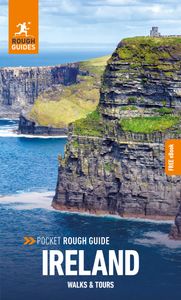
Find even more inspiration here

Planning your own trip? Prepare for your trip
Use Rough Guides' trusted partners for great rates
written by Rough Guides Editors
updated 06.06.2021
Ready to travel and discover Ireland?
Get support from our local experts for stress-free planning & worry-free travels.
- Travel advice
- Where to stay

Free Tourist Attractions
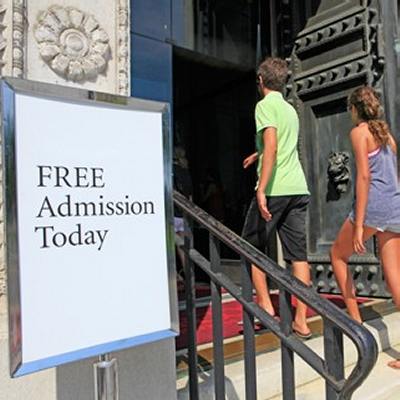
Pay-For Tourist Attractions

Irish Tourist FAQ
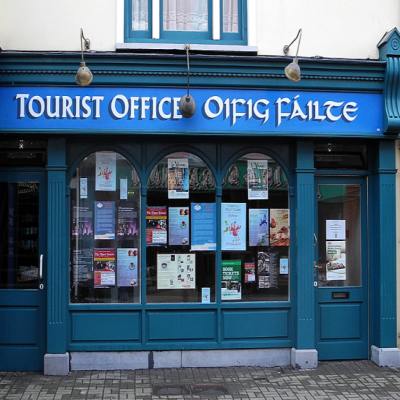
Ireland Travel Guide
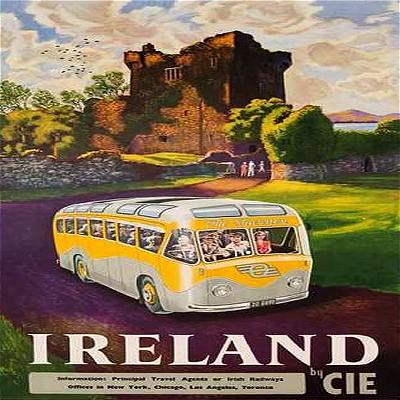
Map of Ireland
Book of Kells
Clonmacnoise
Giant's Causeway
Rock of Cashel
The GPO, Dublin
Reference Data about Ireland
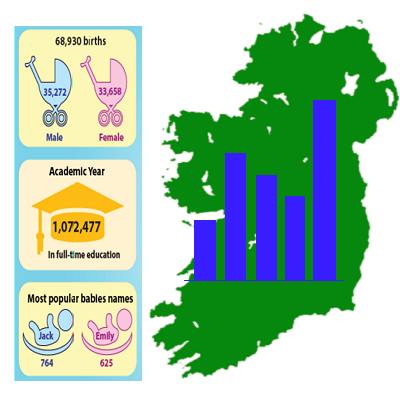
Irish Wedding Traditions
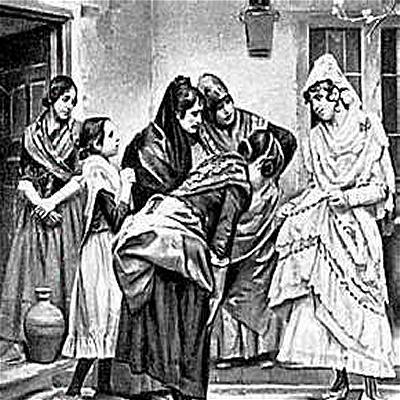
Saint Patrick
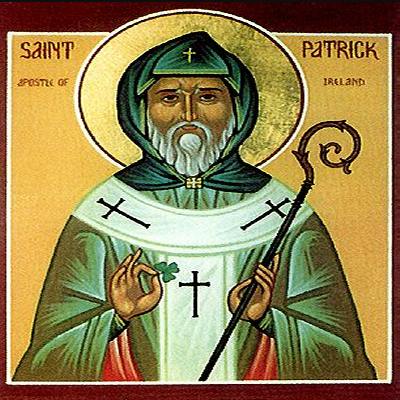
Irish Recipes
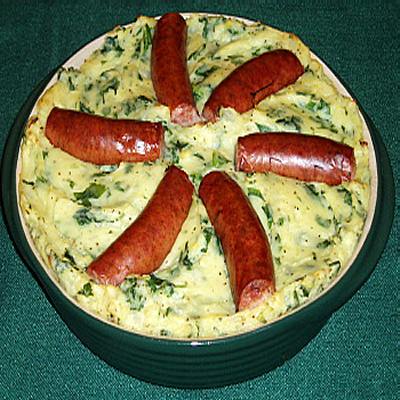
Ireland Maps
Irish Music
Irish Sayings & Blessings
Saint Patrick's Day Traditions
Irish Halloween Traditions
Irish Christmas Traditions
Irish Childhood Traditions
Irish Mythology
The Adventures of Conan From Tirdevlin
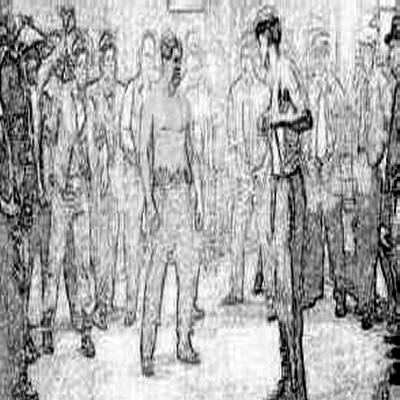
60 Lyrical yarns by Pat Watson
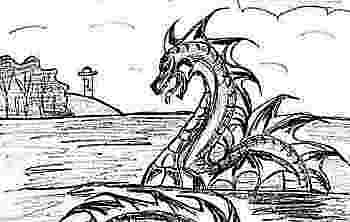
Flavour of Ireland by Brian DeVon

Mattie Lennon
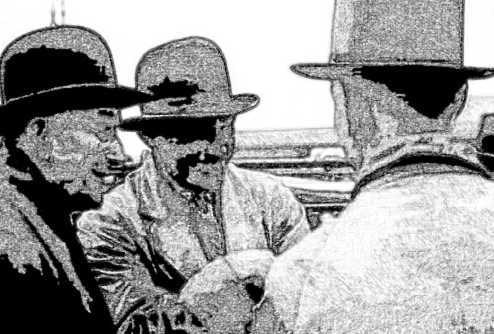
Michael Collins
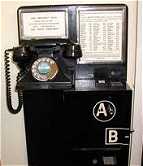
John B. McCabes
Marie O'Byrne
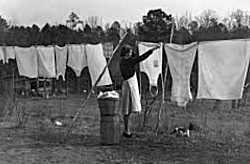
Bram Stoker
Oscar Wilde
Jonathan Swift
Liam O'Flaherty
Frank O'Connor
Brendan Behan
James Plunkett
Brief History of Ireland
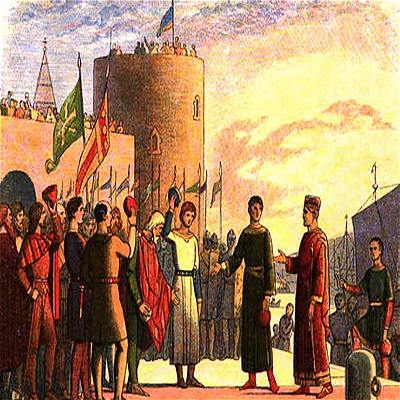
Easter 1916
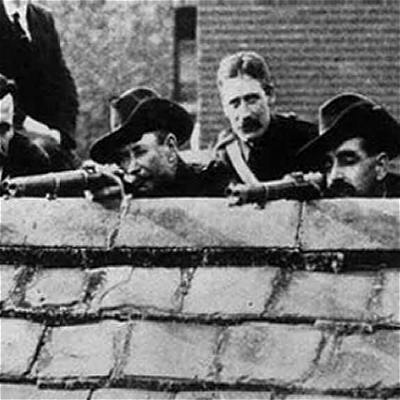
The Black Irish
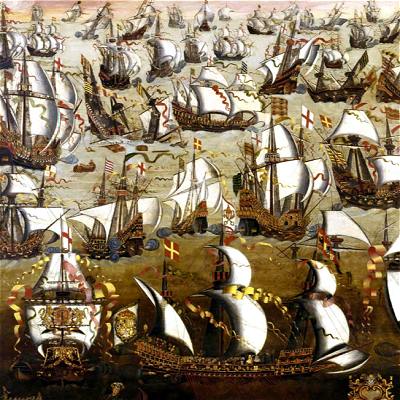
The Irish Famine
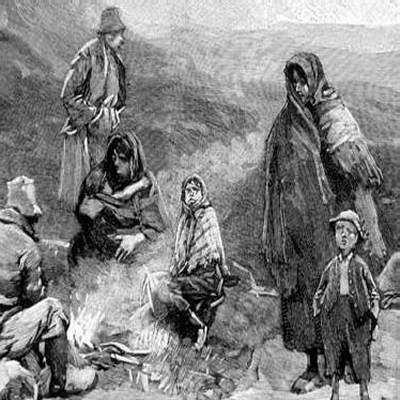
1798 Rebellion
Dermot, Strongbow and the Invasion of Ireland
The Titanic and Ireland
The Vikings in Ireland
The Ancient Ogham language
Padraig Pearse
Countess Markievicz
Saint Brigid
Robert Emmet
Kevin Barry
Eamon deValera
Sean Lemass
Daniel O'Connell
Charles Stewart Parnell
Grace O'Malley
James Connolly
Irish Stamps
Irish News Blog
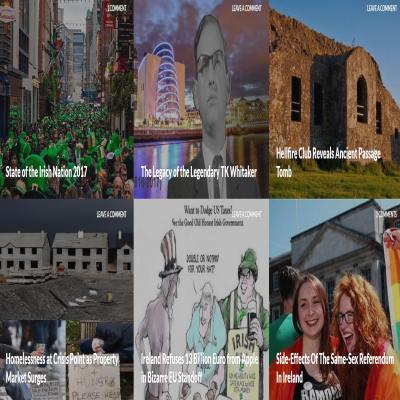
The State of the Irish Nation 2017
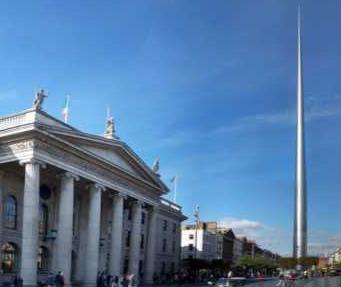
The Legacy of TK Whitaker

Side-Effects of the Same-Sex Marriage Referendum

The Irish in WW1
The Poppy Conundrum
Irish Seanad Disgrace
Free Photos of Ireland
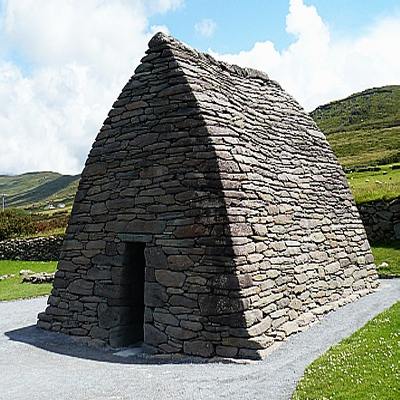
Irish Screensavers
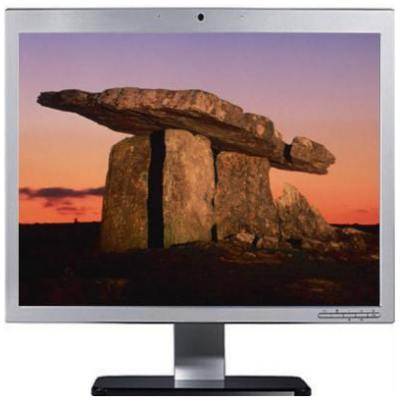
Free Celtic Fonts
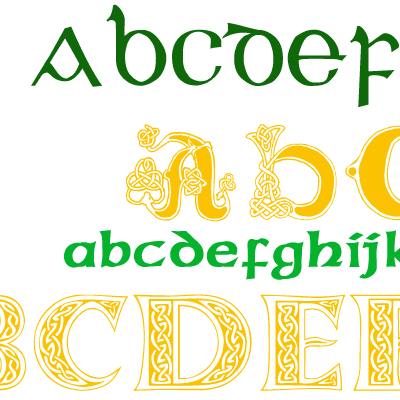
Free Celtic Clipart
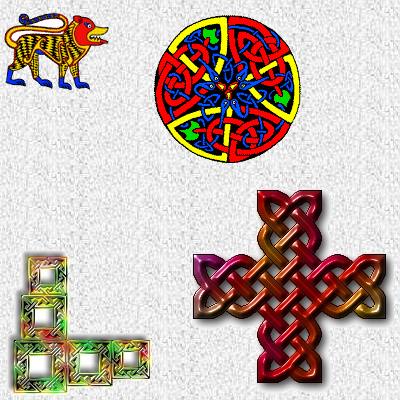
Free Ebooks
History Reports
Irish Stories
Irish Music Lyrics
- CATEGORIES Family Crests Jewellery Flags Home Decor Framed Art Galway Crystal GIFTS YOU WONT FIND ANYWHERE ELSE IN THE WORLD! Heraldic Clock Christening Cup Marriage Print Irish Stamps Art Lyrics Plaques OCCASIONS Wedding Christmas Baby St. Patrick's Day GIFTS FOR... Gifts for Her Gifts for Him Baby & Kids

Free Irish Tourist Guide Download
Our Popular Free Irish Tourist Guide is yours for the taking.
Previously sold for US$ 15 the guide is now offered free to download at the link shown below.
Over 500 Hotels, Guesthouses and B&Bs listed, County by County, each with a separate 'budget' listing. Packed with useful information such as: Dublin Traffic details, Telephone charges, Tax Free Shopping, Taxi Fares, Accommodation charges, Contact Numbers, Smoking in Ireland and a Map of Ireland showing the location of the main attractions. Find out the best attractions in Ireland - County by County! The best 100 tourist 'things to do' are listed with a description of each and further contact information.
Sign up to our Free Newsletter from the simple form shown below to get more free tourist information, stories, articles, the latest news and much more from Ireland.
You can download your Free Ireland Tourist Guide HERE . Get the map that goes with it Here .
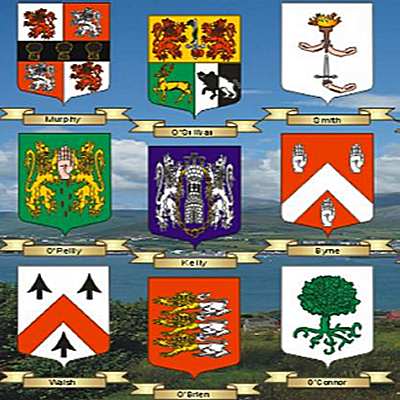
1000 free-to view Irish Coats of Arms and Irish Name Histories.

Most Popular Irish Baby Names in Ireland
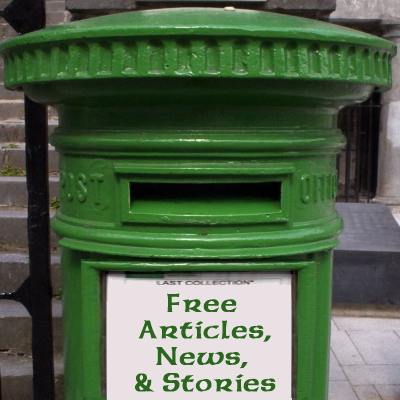
First Name: Email: Please Tick This Box: please wait a moment...

- Go to Contact Form
- Tel: ++ 353 1 2893860 (from USA dial 011-353-1-2893860)
- ireland-information.com, 17 Páirc Ghrainbhil, Carraig Dubh, Contae Baile Átha Cliath, Ireland
Visitor Information
- Frequently Asked Questions
Most Popular Irish Gifts
- Family Crest Gifts
- Irish Jewelry

Regions of Ireland & Britain
- East Ireland
- South East Ireland
- West Ireland
- South West Ireland
- North West Ireland
- Northern Ireland
- Britain and Ireland Cities
Our Travel Stories
- The Beara Peninsula
- Kenmare Bay
- The English Lake District
- More Travel Stories
Popular for Visitors
- Top Attractions of Britain & Ireland
- Hidden Gems
- Castles & Ancient Settlements
- Irish Islands & Islets
- Planning for your Group
- Solo Travel in Ireland
- Backpacking in Ireland
Your Interests
- Breweries & Distilleries
- Irish Culture
- Irish Film Locations
- Ireland Then and Now
- Travel Photography in Ireland
- Outdoors & Activities
- City Tours of Britain & Ireland
- Golf in Ireland
- Walking & Hiking
- Britain & Ireland's Places of Worship
- Britain & Ireland's Historic Locations
Useful Information
- Advice for Visitors
- Laws, Customs & Staying Safe
- Working & Volunteering in Ireland
- Getting Married in Ireland
- Ireland in 7-Day

My Ireland Tour
- Our Tour Packages
- Arrange a Private Tour
News & What's On
- News & Events

Dublin Travel Guide
- Introduction
- Attractions
- Where to Stay
- Food & Drink
Dublin City Gateway to Ireland
Dublin is Ireland's largest city and is seen as the gateway to The Emerald Isle. If you're travelling to Ireland by air, there's a good chance you will land and begin your tour in the capital. However, Dublin is far from a stopover on your Irish vacation: this vibrant city has plenty of attractions to suit all visitors and easily merits a few days in itself. Of course, this isn't always possible and, for those who have a tight travel itinerary, we have written a pieces detailing exactly how to do Dublin in one day , and how to do Dublin on foot .
- Dublin Attractions
- Eating & Drinking
- Historical Sites
- Art & Culture
- Hiking & Biking
- Book a Vacation
Dublin's Top Attractions
Dublin is Ireland's capital city and its most historically significant, having been the second city of the British Empire until Ireland's independence in 1922. Dublin today is teeming with enough art, culture, and monuments to fill multiple itineraries. Planning to see all the top attractions in Dublin can be a daunting task, but there's good news...
In comparison with other major cities in Europe, Dublin is compact, flat and easily walkable. With the right amount of pre-planning, you can start getting the 'must-see' attractions off your list pretty quickly. Every visitor to Dublin will have their own unique bucket list, but, in case you're caught for time or want to start plotting your adventure straight away, we've drawn up a list of the classic, 'I can't go home without seeing' attractions of Dublin.
1 Temple Bar
Temple Bar is perhaps the most visited district of Dublin, with many tourists scarcely venturing beyond Dame Street and the Liffey which mark the upper and lower reaches of this cultural quarter. Tourists who enjoy Trinity College and Christ Church Cathedral won't have far to go to enjoy the nearby Meeting House Square with its galleries, archives and weekly food market. Stalls with Irish produce and food trucks take over the Square every Saturday between 10am and 5pm.
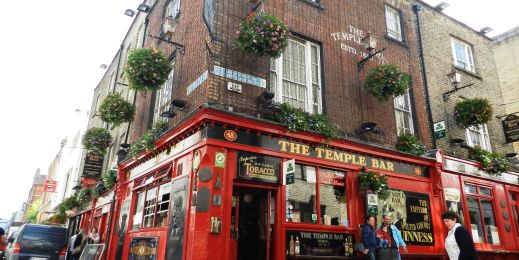
The price of a pint or a bite to eat in Temple Bar is higher, on average than the rest of Dublin City. For this reason, many people walk through the area to soak up the atmosphere rather than spend the whole evening there.
Insider Tips
Temple Bar is a favourite for stag and hen (bachelor/bachelorette) parties and can be very crowded, especially during weekends and summer months.
Visit Temple bar during the day and browse the shops and galleries.
2 Trinity College
Ireland's most prestigious university is arguably its most attractive too. Covering no less than 16 hectares, the college buildings and grounds are a poetic tribute to the best of Victorian architecture. Receiving its charter from Queen Elizabeth I in 1592, Trinity College remained exclusively protestant until 1793. Today, such prejudices and exclusions are long gone, and Trinity enjoys a global reputation as a leading institution for learning, teaching and research.
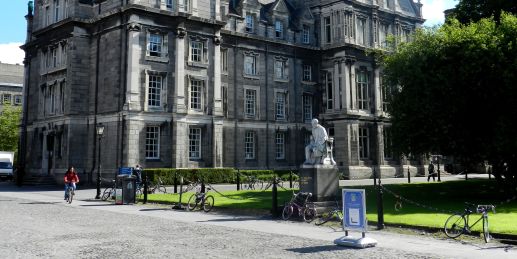
The Old Library building at Trinity College is home to the Book of Kells , which is the most richly decorated of Ireland's medieval illuminated manuscripts. The book contains the four gospels in Latin. Some of the dyes used were imported from as far as the Middle East. When you are visiting the Book of Kells exhibition, take some time to admire the Long Room. Its oak bookcases hold 200,000 of the library's oldest books.
On a sunny day, be sure to bring a picnic so you can enjoy the stunning grounds over a relaxing lunch break.
Take a guided tour led by one of the students to learn more about the history of Trinity College. A guided tour includes admission to the old library and the Book of Kells exhibition.
Looking for budget accommodation in the heart of Dublin? From May to mid-September you can book a room on campus.
Practical information
Located in the heart of Dublin, Trinity is easily accessible by Luas, bus or on foot and close to other attractions such as Temple Bar and Christ Church Cathedral.
Opening hours
You can visit the book of Kells and the Long Room seven days a week.
From October to April opening hours are 09.30 to 17:00 (Monday to Saturday) and 12:00 to 16:30 (Sunday).
From May to September opening hours are 08.30 to 17:00 (Monday to Saturday) and 09.30 to 17:00 (Sunday).
Admission fee
Tickets for the book of Kells exhibition must be pre-booked online . A standard ticket costs â¬18.50 and children under 5 are free. Concession tickets for students or seniors (over 60) are available from â¬15.
3 Guinness Storehouse
Shaped like a giant pint of the black stuff, this most popular of Dublin attractions towers over the surrounding neighbourhoods. The site of the brewery itself is massive, at a staggering 26 hectares. However, it will be the old grain storehouse that you visit. The building was constructed in 1902 and was the St. James's Gate Brewery's fermentation plant - where yeast is added to the brew. Designed in the style of the Chicago School of Architecture and classed as one of the first skyscrapers in the British Isles. In 1997 the building was redesigned to become the tourist attraction we know today, the Guinness Storehouse .
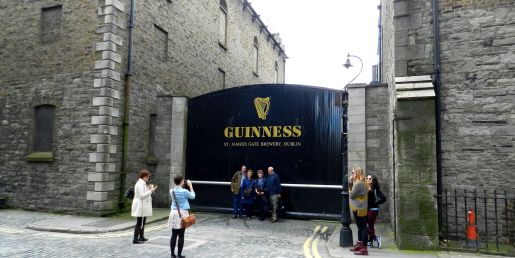
Opened in December 2000, Guinness Storehouse has become the most visited attraction in Ireland. To date, they have welcomed over 20 million visitors. Over the years there have been numerous investments made to ensure that the tour features the most cutting-edge technology available to explore the past, present and future of St. James's Gate. At the end of the tour, at the top-floor Gravity Bar guests are greeted with a delightful panorama view across the Dublin cityscape with a complimentary well-earned pint (providing the guest is 18 or over). The Guinness Storehouse is a favourite memory for a lot of people on their tour of Ireland.
The self-guided tour will take you through the history of the brewery and the brewing process spread out over 7 floors. The visitor experience uses audiovisual and interactive displays to tell its story. The experience will take about 90 minutes.
One thing that we regretted during our visit to the Guinness Storehouse was that we didn't have a pair of binoculars, to take in the full detail of the cityscape as we enjoyed a pint in the panoramic Gravity Bar.
Visit early in the day to avoid the big crowd.
Open on Monday to Thursday from 13.00 to 18.00. Last entry an hour before closing.
Open on Friday & Saturday from 11.00 to 19.00. Last entry an hour before closing.
Open on Sunday from 11.00 to 18.00. Last entry an hour before closing.
You can book a time slot for your visit online. Tickets for a self-guided tour start from â¬18 and include a pint of Guinness. A child ticket (5-17 years) is â¬10 and children up to the age of 4 go free. The ticket rate is based on the time of your visit.
4 Shopping in Dublin
Dublin provides plenty of opportunities for some retail therapy, and if you are looking to hit the shops during your time in the capital, it is Grafton Street that you will want to head for. This district of Dublin has all the high-street stores you could ask for, with British-owned chains being perhaps the best represented here.
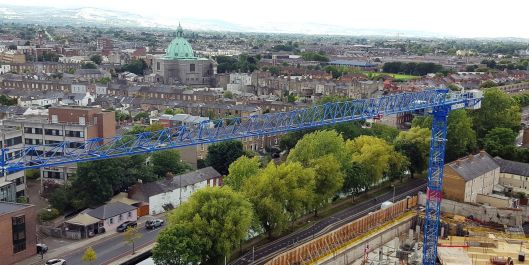
If you're looking for something a little more unique or boutique, then you won't have to wander very far. The streets that intersect this main artery of Dublin centre have plenty to tempt you. This is perhaps not the cheapest shopping district you will find on your travels, so be sure to pack your Euro.
Visa and Mastercard are accepted in nearly all Irish stores, but be advised, that not all shops will take American Express.
5 Christ Church Cathedral
Christ Church Cathedral was founded by Viking King Sitric, almost 1000 years ago, in 1034. The nave, or central part of the church, contains the tomb of medieval warlord Strongbow—leader of the Anglo-Norman invasion of Ireland. It also contains the heart of Dublin's patron saint, Saint Laurence O'Toole. The crypt of the church, which is one of the largest in Ireland and the UK, has been restored from the 12th century and houses an exhibition called the Treasures of Christ Church. Amongst other manuscripts and artefacts is a 14th century copy of the Magna Carta Hiberniae (a book of law dating back to 1216). Perhaps the crypt's most popular exhibit is the mummified remains of a cat and a rat. Known locally as 'Tom & Jerry', the cat is believed to have chased the rat into a pipe of the church organ, where they both eventually became stuck.
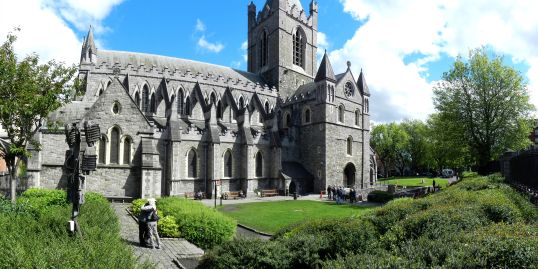
On guided tours, there is also the chance to ring the church bells. The oldest of that dates back to 1743 and, collectively, the 19 bells form the world record for the number of bells available for full-circle ringing. Getting to the Belfry in Christ Church Cathedral involves climbing 86 stone steps in a medieval building and crossing the roof at the South transept â quite the experience! Please note , because of this steep climb a visit to the Belfry is not suitable for children under 12 or if you have walking difficulties
Visit on a Sunday evening and linger for an enchanting evensong service to experience the heavenly acoustics of this historic building.
Many events are organised throughout the year at the Cathedral, such as free lunchtime concerts and lectures. Don't miss the 'Carols by Candlelight' events if you are visiting at Christmas time.
You will find Christ Church Cathedral in the heart of medieval Dublin. It is on many of the city centre bus routes and served by the Luas Red Line (Four Courts Stop).
Leaflets in 11 languages are available, free of charge. There is also a children's leaflet in English. Just ask for them at the welcome desk.
Please check their website for the most recent updates regarding the opening hours.
Admission prices
Please find the rate for a self-guided tour below:
- Student & Senior (65+): â¬6.5
- Child under 12: â¬3.50
- Toddler (0 - 4 years): Free
6 Dublin Castle
Visitors who set off in search of ramparts and turrets are likely to walk past Dublin Castle in search of something more medieval-looking. So, be warned that there won't be jousting and suits of armour. For 700 years, the bastion of British rule in Ireland, the castle is really a Victorian architectural mish-mash, and wouldn't look out of place in London or Paris.
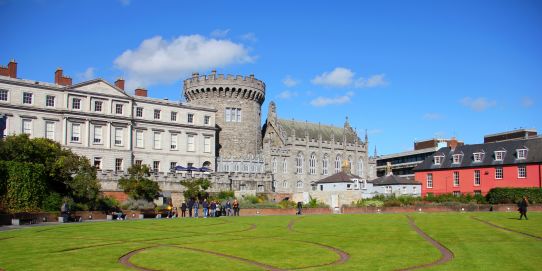
This is perhaps one of the more sedate attractions you'll find set against Dublin's bustling backdrop, and it's certainly not a day out for the kids, but the 45-minute tours are frequent and informative. A visit to the castle will appeal to anyone who has a keen interest in Irish history.
Especially for visitors following a tour guide for one quick 'lap', Dublin Castle will be more of a short visit than a full day out.
Use the free Wi-fi access in the Castle to download the Dublin Castle app.
The castle grounds and gardens are free to explore. A self-guided guided visit to the State Apartments is available and takes about 40 minutes. Guided tours are also available. You can get a brochure in 17 different languages or download the free Dublin Castle app.
Open 7 days a week from 9.45 to 17.45, with last admission a half-hour before closing.

Getting to Dublin
Arriving by plane.
Almost everyone who arrives on a visit to Dublin from abroad will arrive by plane (though some self-drive visitors from the UK may arrive by Ferry). Dublin Airport is located just 10km (6 miles) from Dublin City Centre and is accessible by both the M50 and M1 motorways. It is made up of two terminals. Visitors arriving from the USA and Canada will be arriving at Terminal Two.
Terminal One
Short-haul flights. Served by Ryanair, British Airways, Germanwings, Iberia, Lufthansa, Norwegian, SAS and Air France.
Terminal Two
Long-haul flights. Served by American Airlines, US Airways, Delta, Air Canada and Aer Lingus. Recent additions to Terminal 2's roster include United Airlines, Etihad and Emirates.
Airport Shuttle Bus Services
There are bus services available to and from both terminals, provided by Aircoach , Airlink , Dublin Bus and GoBus . Aircoach will bring you to multiple stops in Dublin City, including O'Connell Street and Grafton Street. They also operate routes to and from Cork City (€19- Adult, Single, 3hrs) and Belfast City (€12- Adult, Single, 2hr 20mins). You can follow their distinctive blue signs from the arrivals hall in both terminals. GoBus offers a route from Dublin Airport to and from Galway City (€18- Adult, Single, 2hrs 30mins). A ticket to Dublin City Centre from Dublin Airport costs â¬6 (Single)/ â¬11.50 (Return). Dublin Bus also operates a service between Dublin Airport and Dublin City for a similar price.
Like all international airports, there is a large number of taxis available outside both terminals at all times. To travel to the city centre by taxi will cost between €30-€40.
Currently, there is no direct railway link between Dublin Airport and Dublin City.
Arriving by Bus
The main bus terminal of Dublin City is Busáras Central Station . Located on the eastern edge of the city centre, on the same street as Connolly Train Station. Busáras Central Station is the terminal for all state-run buses coming in and out of Dublin City, both locally and across Ireland.
There are also a number of private bus companies that operate in and out of Dublin City. Their pick-up and drop-off points differ from one another and depend on what part of Ireland you are going to/coming from. The majority will have pick-up and drop-off points at Dublin Airport.
Arriving by Train
Train services in and around Dublin serve local commuters better than they do visiting tourists. To get to Dublin from a different region of Ireland by land, the bus is usually the recommended option.
Arriving by Car
Most people who visit Dublin City would usually advise against driving there. The traffic in the city centre can come to a stand-still for large parts of the day and you have to travel miles outside the city before you can find any free parking. If driving to Dublin city is a must you can find more information on parking here .
Arriving by Ferry
Dublin Port operates ferries across the Irish Sea to Liverpool in England, Holyhead in Wales and, during Summer and Christmas, to Douglas on the Isle of Man. The ferry companies that operate to and from Dublin Port are Irish Ferries, Steam Packet, P&O Ferries and Seatruck Ferries.
Getting to the City Centre
Dublin Port is connected with Dublin City Centre via Dublin Bus ( the number 53 bus ). Bus fares are payable with coins (Euro), smart cards or pre-paid tickets. There is a plentiful number of taxis outside Dublin Port at most times of the day, expect to pay in the region of €9 to €12 for a taxi to the city centre. The Luas Red Line tram operates 7 days a week and is located on East Wall Road, opposite the entrance to Dublin Port, and a one-way ticket to the city centre costs €2.
Is it easy to get around Dublin?
Because the roads are so busy, driving in Dublin is not usually recommended. In the capital, public transport is usually the best way to get around. When navigating your way around the city itself, the following three options are usually the best, depending on the weather and what luggage you may have with you.
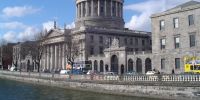
Dublin Bus Services
Dublin City and its suburbs are well catered for in terms of bus services. The state-owned Dublin Bus company, founded in 1987, has a reputation of being reliable, plentiful and not too harsh on the pocket.
It is always advisable to check their timetable and stop locations if you are planning a bus journey, especially if you are new to the city. For more information, visit their website...
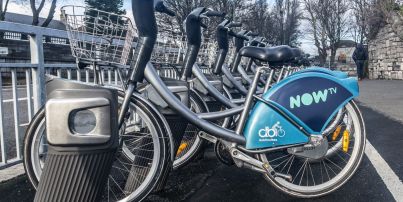
NOW Dublin Bikes
Dublin City runs a bike hire scheme, sponsored by a subscription-based TV service NOW. It is a cost-effective and quick way to get around the city. There are 109 stations in total, each within close proximity to another.
A user must first take out a subscription, which allows an unlimited number of rentals. A long-term subscription is â¬35, a 3-Day ticket costs â¬5. Under 30 minutes is free and prices only go up after this. For longer rides, it is advisable to get to a terminal in under 30 minutes and take a new bike. For more information, visit their website...

Dublin City taxis are also known as hackney carriages, the kind that you can flag down on the street or find at a taxi rank. There are also private hire vehicles, which are not licensed to "ply for hire" or stand in a taxi rank and can only be booked in advance.
A taxi journey of 35 minutes (for example from Dublin Airport, in the North of the city, to the city centre) would cost between €30 to €40. See here for more info on Dublin Taxi ranks .
Other Regions of Ireland & Britain

Regions of Ireland & Britain
- Travelguide Homepage
- UK & Ireland Cities
Your Group & Interests
Travel advice.
- Our Ireland Tour Packages
Adare Village and Thatched Cottages
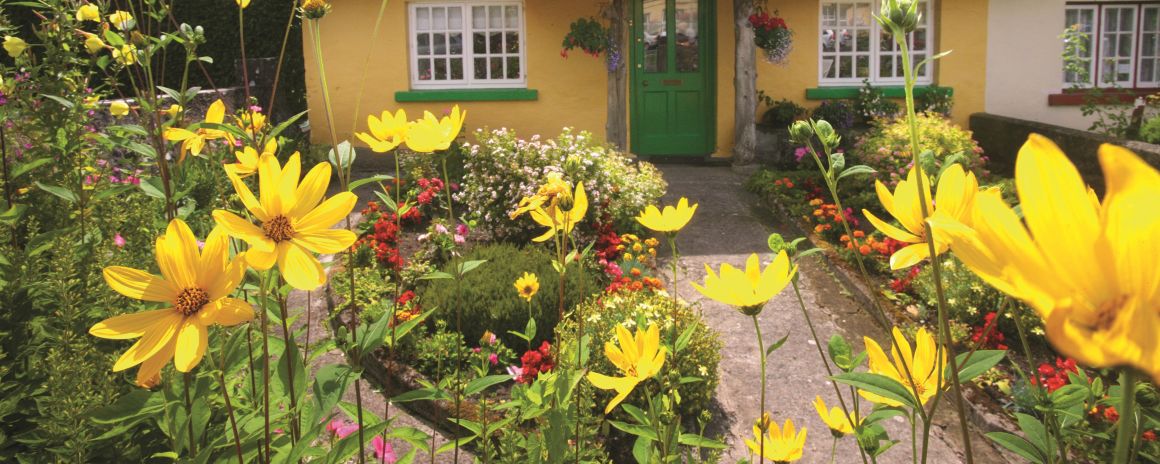
About Adare Village and Thatched Cottages
Adare is a small town in Co. Limerick, known for its quaint and colourful thatched cottages. Adare is considered to be one of Ireland's most beautiful towns so stop and take in the view. Don't forget your camera today - the perfect chance to capture the essence of old Ireland.
Explore Adare Village along the Wild Atlantic Way .
Black Taxi Tour Belfast
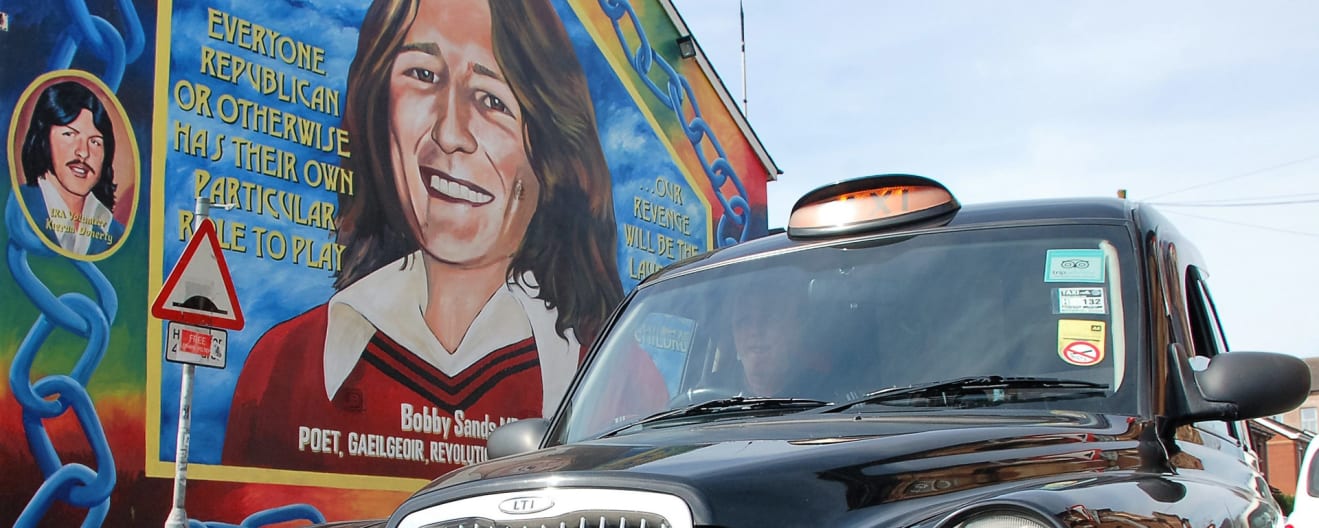
About Black Taxi Tour Belfast
Take a journey through this once troubled city. See the murals of the Loyalist Shankill Road & Nationalist Falls Road. The Troubles took their toll on the economic life of Belfast, but the past ten years of peace have returned much prosperity while the genuine friendliness of the city never left.
Blarney Woollen Mills
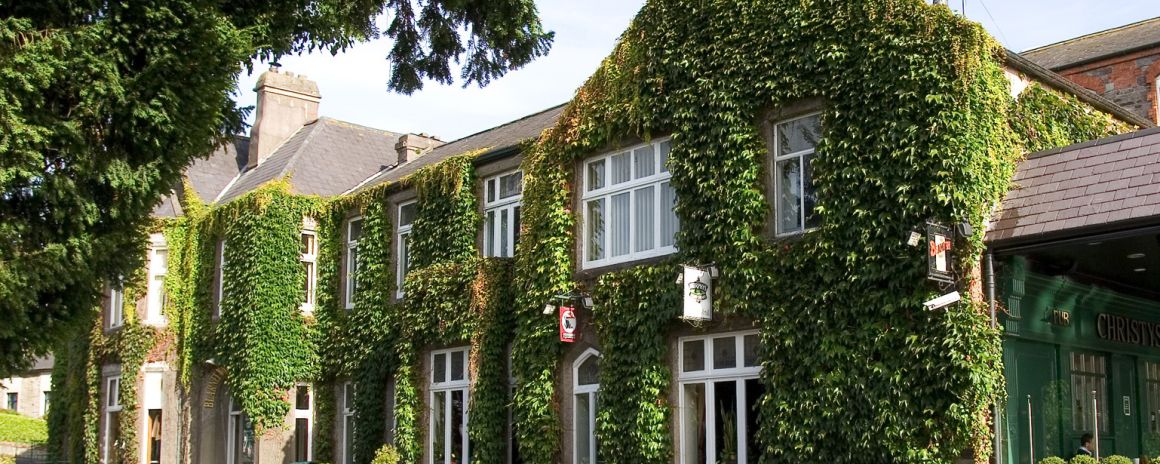
About Blarney Woollen Mills
Originally built in 1823, Blarney Woollen Mills was mainly used for the spinning and weaving of wool. After it closed in 1973, it reopened in 1975 — as an Irish heritage shop.
Visit their website...
Culloden Battlefield
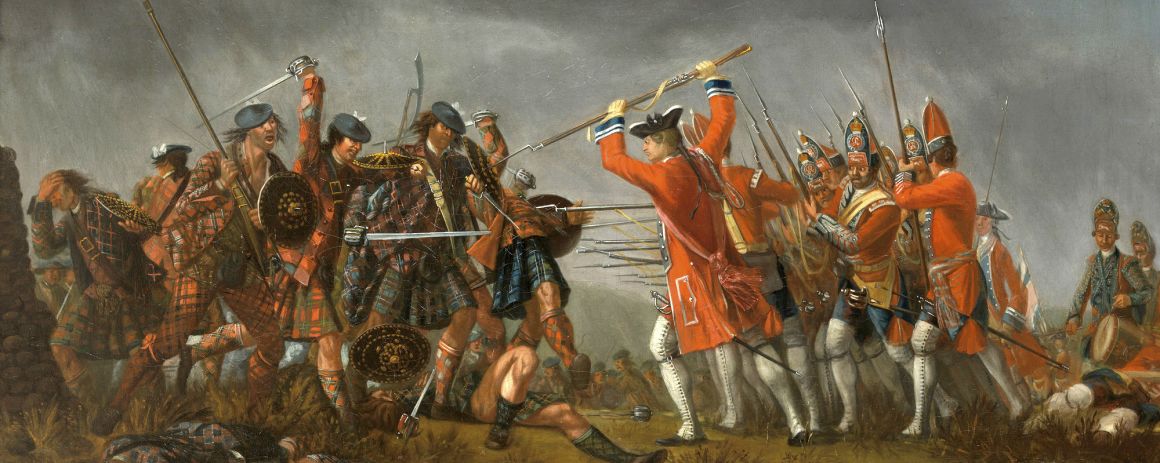
About Culloden Battlefield
The Culloden Battlefield Visitor Centre commemorates the last pitched battle fought on British soil, in April 1746. Learn more about the Jacobite intent to overthrow the House of Hanover and return the House of Stuart to the British throne.
Glenveagh Castle
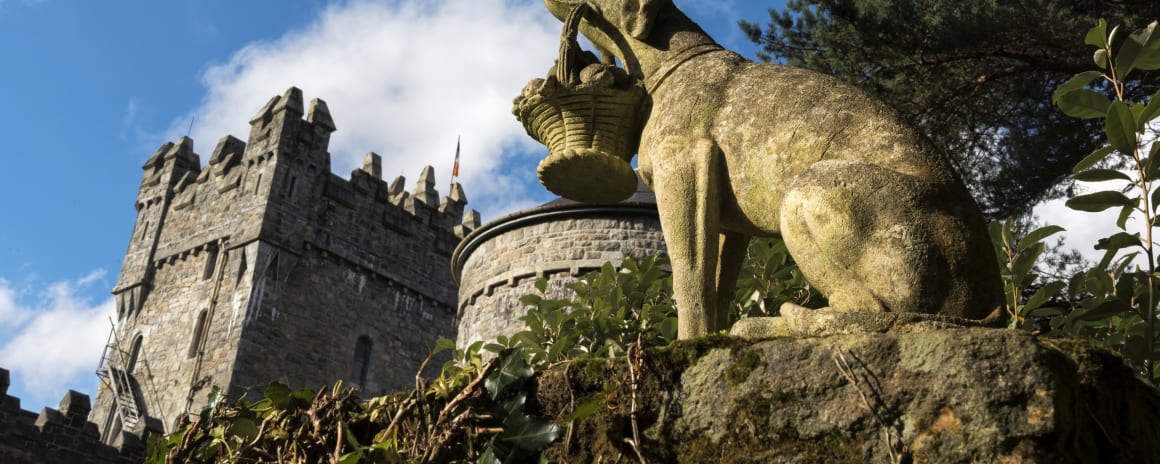
About Glenveagh Castle
Located within Glenveagh National Park, Glenveagh Castle was built by Captain John George Adair between 1870 and 1873. Having made his fortune through land speculation in America, Adair return to Ireland and began large amounts of land in County Donegal. The castle was built in the Scottish Baronial style and is surrounded by a garden and commands stunning views of the nearby mountains, lakes, woodlands and valleys.
Highland Folk Museum
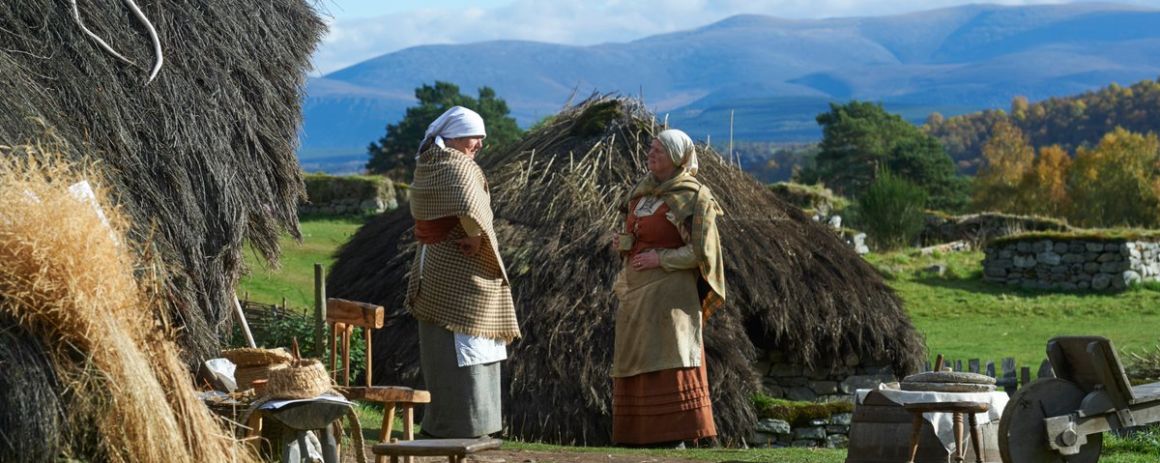
About Highland Folk Museum
About Highland Folk Museum is a museum and open-air attraction located in the Scottish Highlands. It is designed to showcase the domestic and working lives of the early highland people.
King John's Castle
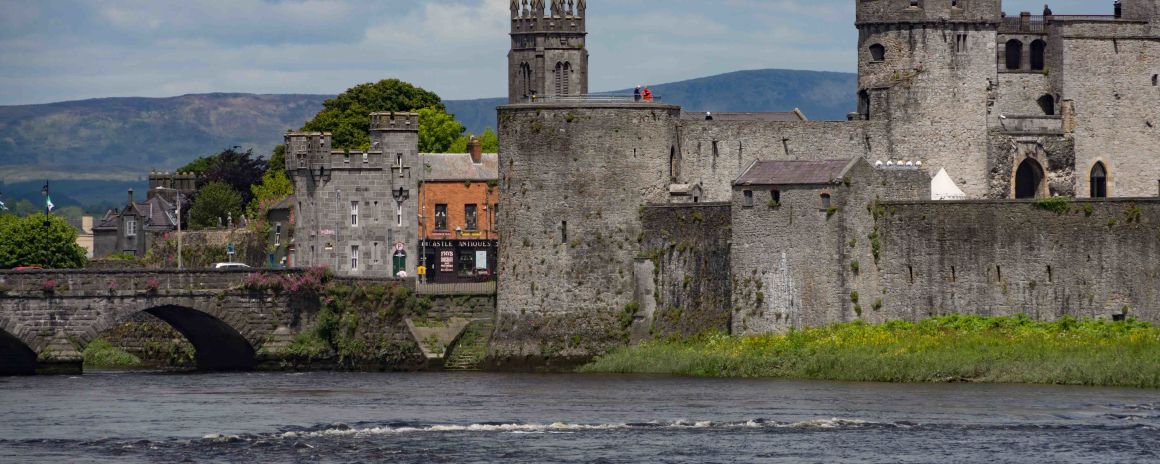
About King John's Castle
Located alongside the River Shannon in County Limerick, on King's Island. Dating back to 922, to a time when Vikings were the inhabitants of the island (Thormodr Helgason, the Viking sea-king, built the first settlement here. The castle itself was built in 1200, under the instruction of King John of England.
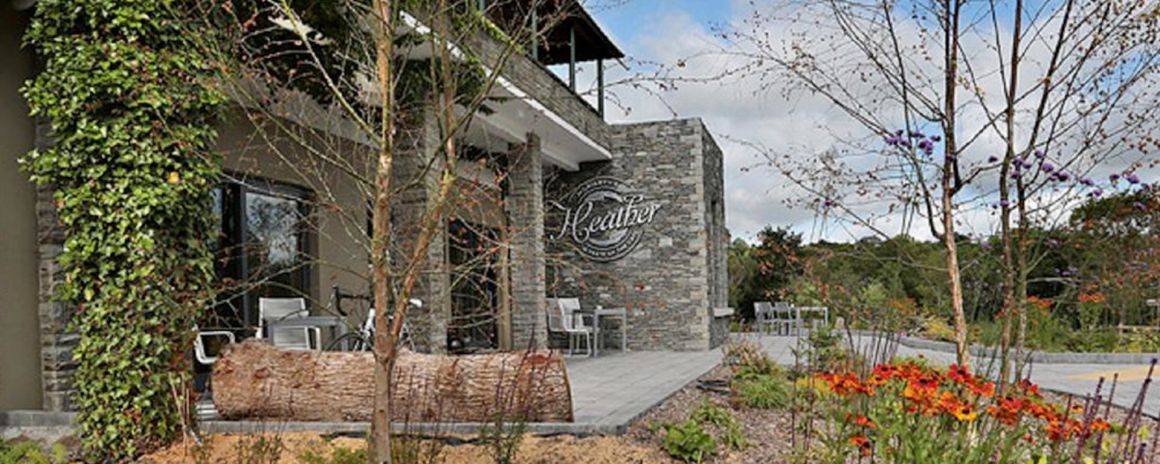
About Moriarty's
Located close to the Killarney National Park, Moriarty's is an Authentic Irish Gift Store and Restaurant. Hand crafted Irish jewellery, Waterford Crystal and classic and modern tweed fashions and furnishings are all on offer at the gift store. The restaurant is an 85 seater offering stunning views of the surrounding landscape.
Mount Congreve Gardens
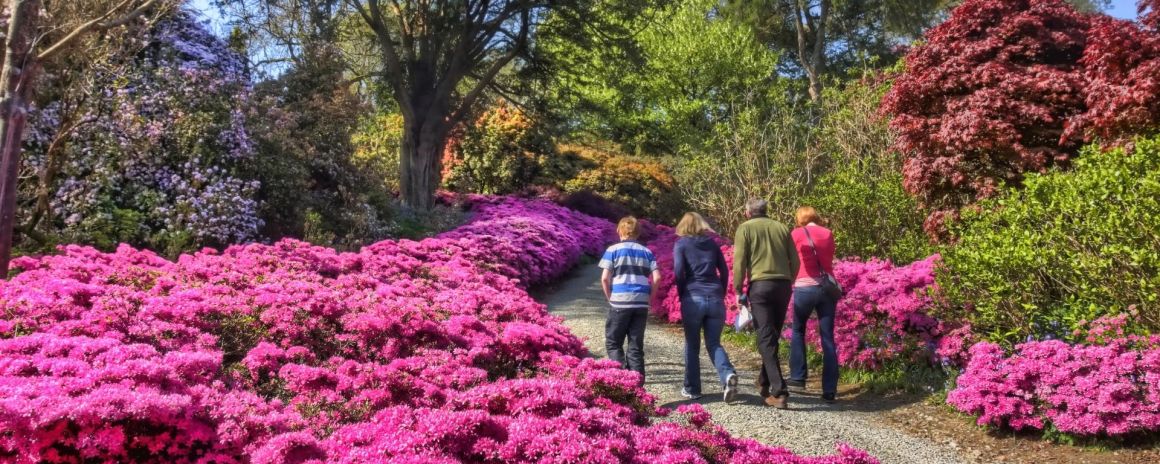
About Mount Congreve Gardens
Mount Congreve Gardens. Located in Kilmeaden, County Waterford, Mount Congreve Gardens is an 18th century Georgian estate and mansion. It was designed by the same architect that created both of Waterford's cathedrals, John Roberts.
Mount Stewart House & Gardens
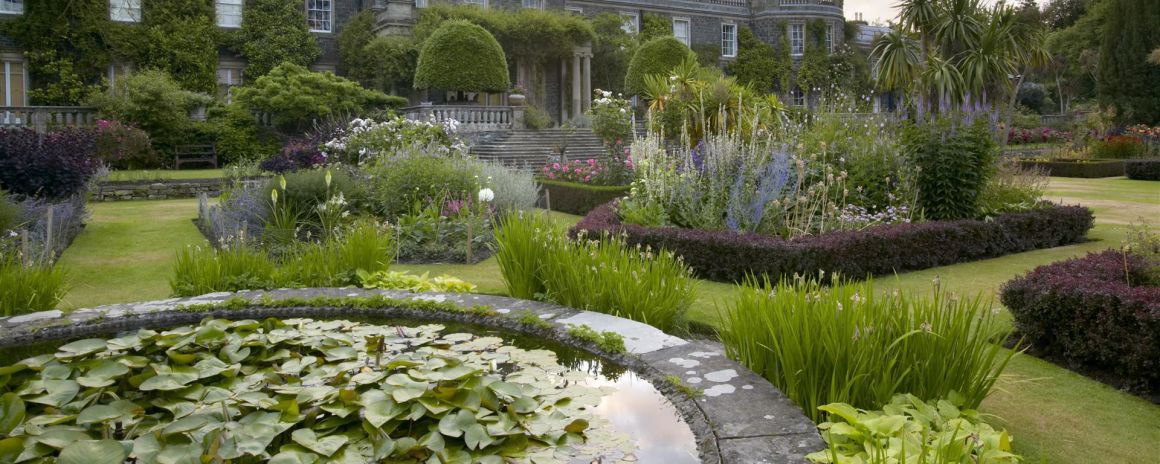
About Mount Stewart House & Gardens
Recently recognised as being one of the top 10 gardens in the world, Mount Stewart is a rich tapestry of planting plant life and stunning walking trails. The house dates back to the 19th century, and was the Irish seat of the Vane-Tempest-Stewart family.
Muckross House
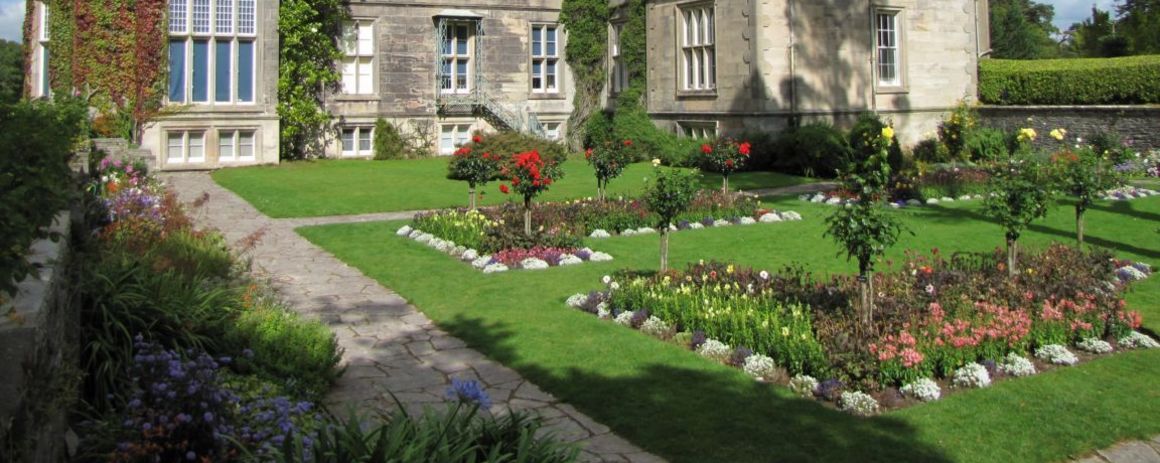
About Muckross House
Located on the grounds of the expansive and idyllic Killarney National Park. Muckross House, and its 11,000-acre grounds, was donated to the Irish state in 1932.
Muckross House Traditional Farms
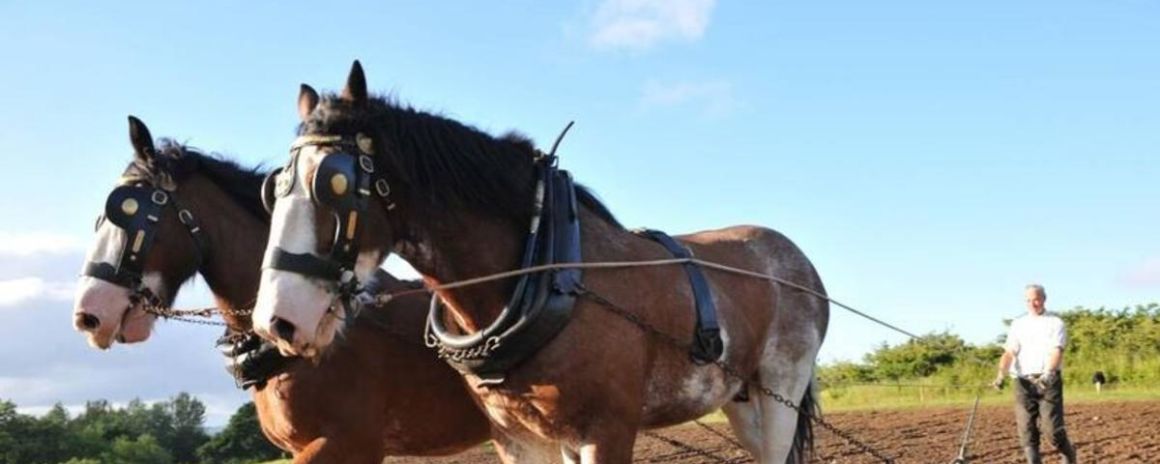
About Muckross House Traditional Farms
Located on the grounds of the picturesque Muckross House and its impeccable gardens. Take a step back in time and see the Irish farming lifestyle of the 1930s and '40s. A time when the horse was responsible for much of the labour and the weather was the be all and end all in terms of production.
The Quiet Man Museum
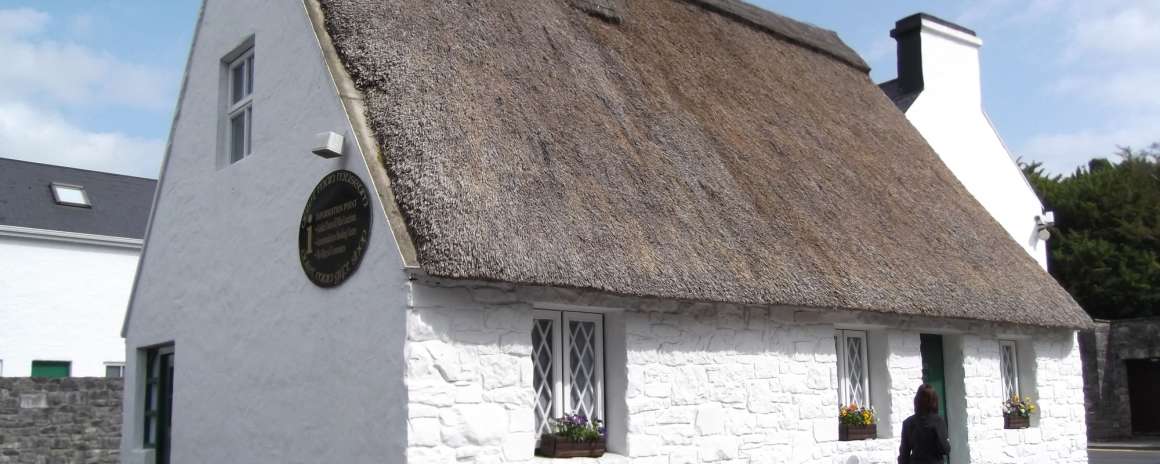
About The Quiet Man Museum
The Quiet Man Museum. A reproduction of the quaint thatched cottage from the John Wayne starring, John Ford directed movie of the same name. all costumes, artefacts and furnishings have been recreated in precise detail, to reflect the setting of the 1952 classic. Located in the picturesque village of Cong, County Mayo.
Ireland Travel Guide
As a local Irish company, we at My Ireland Tour are passionate about our country and our local community. We're thrilled that you're interested in visiting the place we call home. That's why we put together this definitive travel guide for anyone who wants to come to Ireland and discover this amazing place for themselves.
This is a completely free resource covering everything from top tourist attractions to the nearest yoga centre. We hope it helps!
Got questions?
- (US / Ca) 011 353 21 237 9006
- (EU) 00 353 21 237 9006
- [email protected]
- 5 Church Hill Carrigaline Co. Cork P43 X376 Ireland
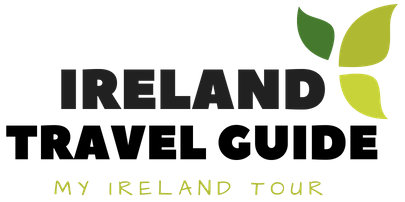
Useful Links:
- Ireland Travelguide
- Advice & Safety
- Solo Travel
- Backpacking
- Click to open search
- Open the main navigation
- Newsletter Opens in a new window
Your guide to the perfect Dublin break
- Food & drink
- Festivals & events
Traveller guides
- Routes and Trails
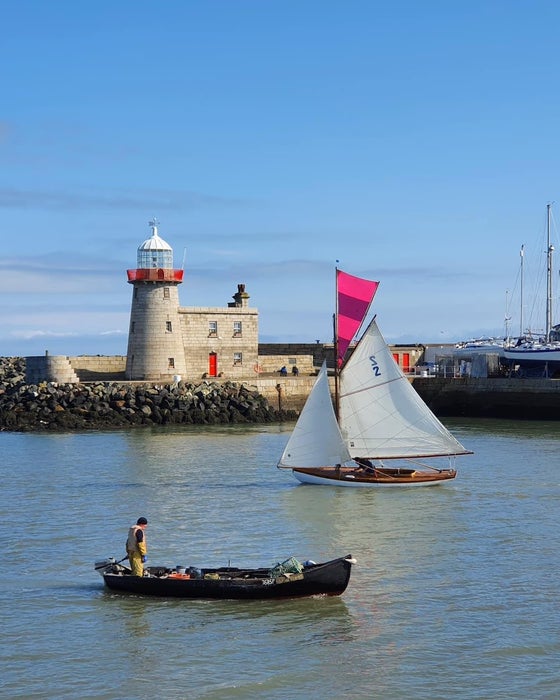
Festivals and events coming up
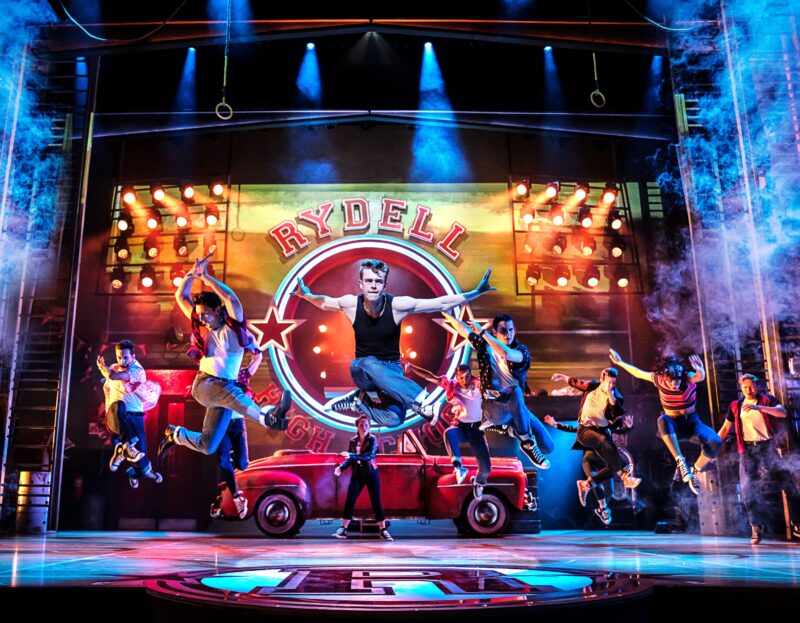
Grease - Bord Gáis Energy Theatre
Tue, 23 Apr - Sat, 4 May
Bord Gáis Energy Theatre

Happy Days Beer & Food Festival 2024
Sat, 4 May - Sun, 5 May
Rascals Brewing Company
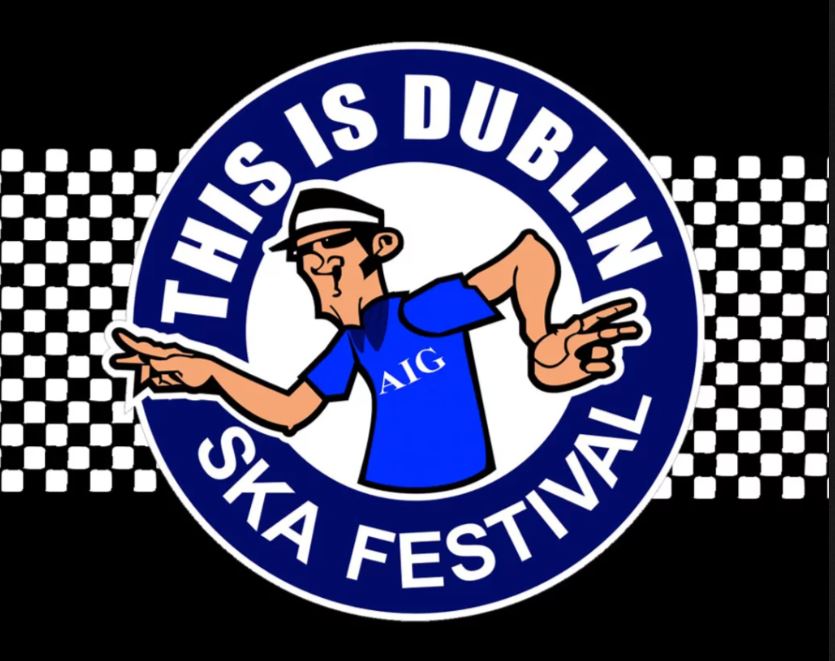
Dublin Ska Festival 2024
Whelan's

Live & Eclectic: Electronic Bankholiday Party
Fri, 3 May - Sat, 4 May

The Bloody Stream May Bank Holiday Live Music
Fri, 3 May - Mon, 6 May
The Bloody Stream
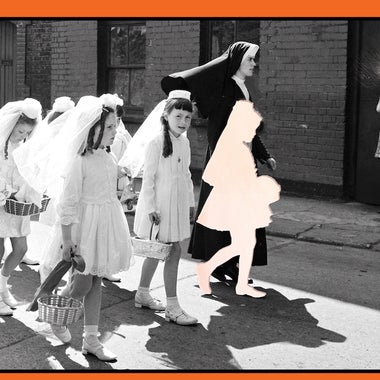
The Ireland We Dreamed Of
Thu, 2 May - Sat, 4 May
Smock Alley Theatre, 1662
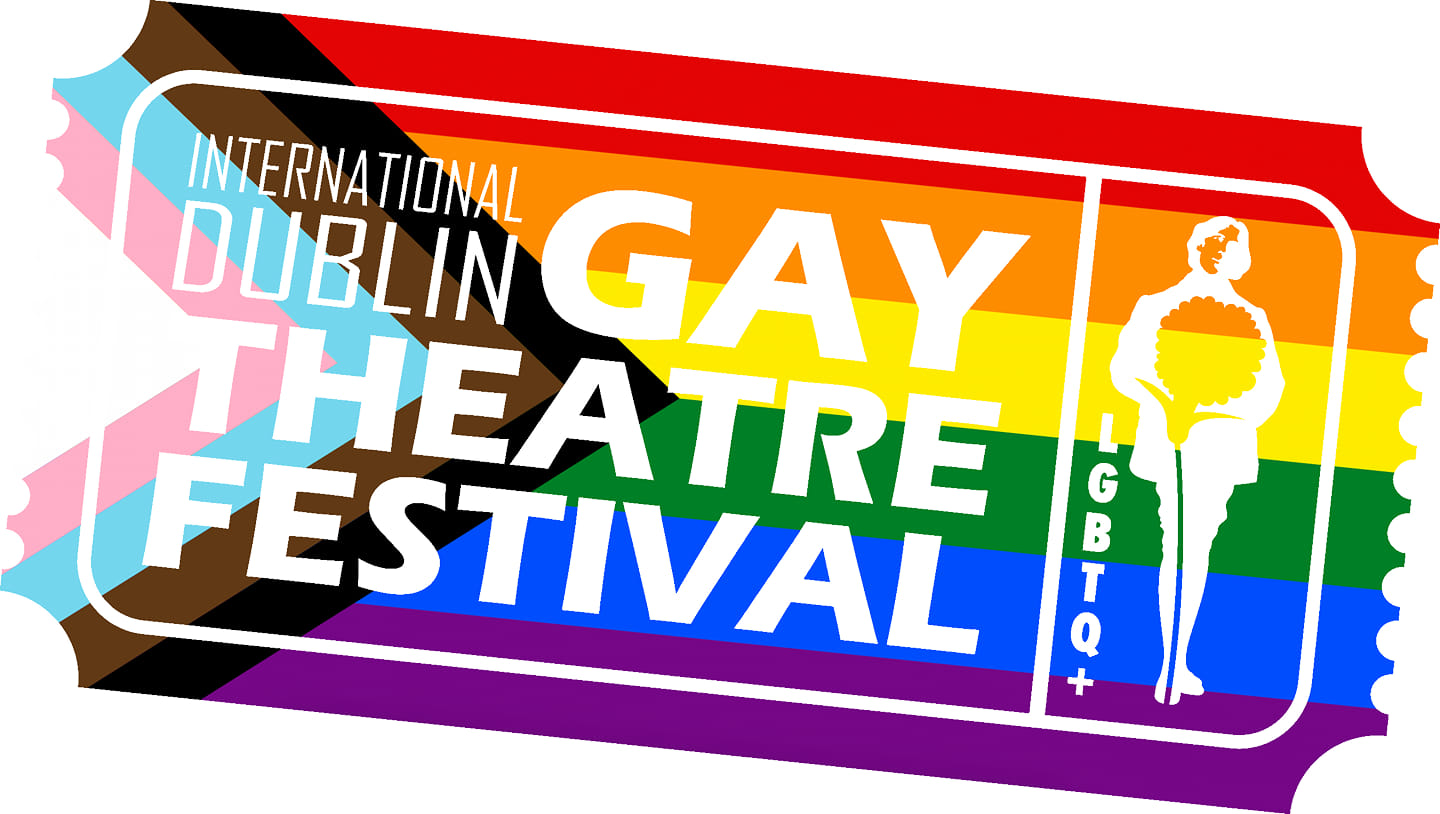
International Dublin Gay Theatre Festival 2024
Mon, 6 May - Sun, 19 May
Various Locations, Dublin City
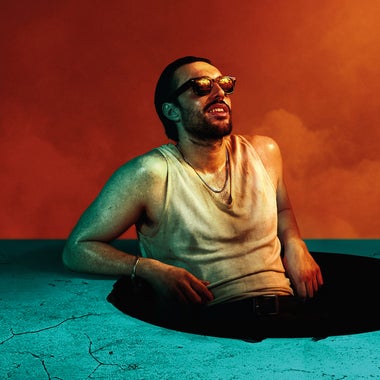
Children of the Sun
Sat, 13 Apr - Sat, 11 May
Abbey Theatre
Traveller Guides
Inspirational ideas to help you plan your Dublin experience. More inspiration

Essential Dublin
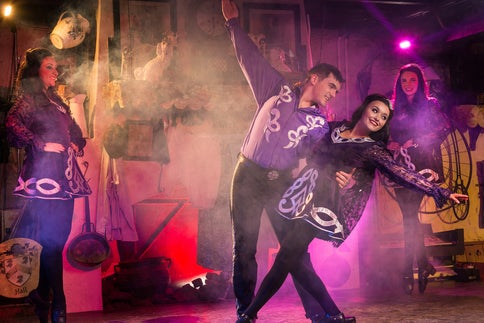
Uncover unique and exceptional experiences that are the lesser known attractions in Dublin
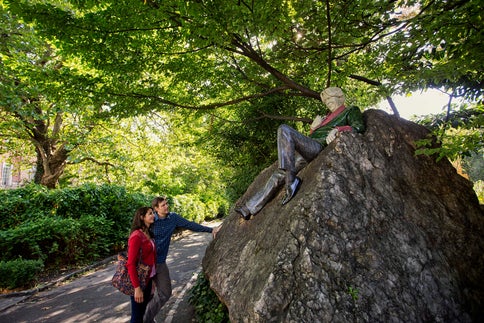
Get the most out of your visit
Getting here
Getting around, travel information, accommodation.
Your Ireland Travel Guide for 2024
Get practical Ireland travel tips, learn Irish slang and even cook up an Irish recipe! This really is the ultimate Ireland travel guide for 2024 and 2025!
Ireland At A Glance
🗺️ Ireland 101
🧳 Plan Your Trip
📅 Best Time to Visit
🏞️ 2024 Bucket List
📸 Dublin Travel Tips
😉 Get to Know The Irish
🎻 TV, Books & Music
🥔 The Best Irish Food
☘️ Tracing Irish Roots
Hi there, I'm Rob Rankin, founder of Vagabond & Driftwood Tours 👋.
Welcome your go-to resource for planning an unforgettable trip to the Emerald Isle!
Perhaps you've already booked a Vagabond or Driftwood tour for 2024 or 2025?
Whatever you're planning, I’m sure you're excited to learn Ireland travel tips and tricks.
Read on, intrepid traveller, Ireland awaits you!
🗺️ Ireland - The Basics
Ireland is a small but mighty country located in the northwestern corner of Europe.
We're located quite close to Scotland and the rest of the United Kingdom (UK) — but on a separate island.
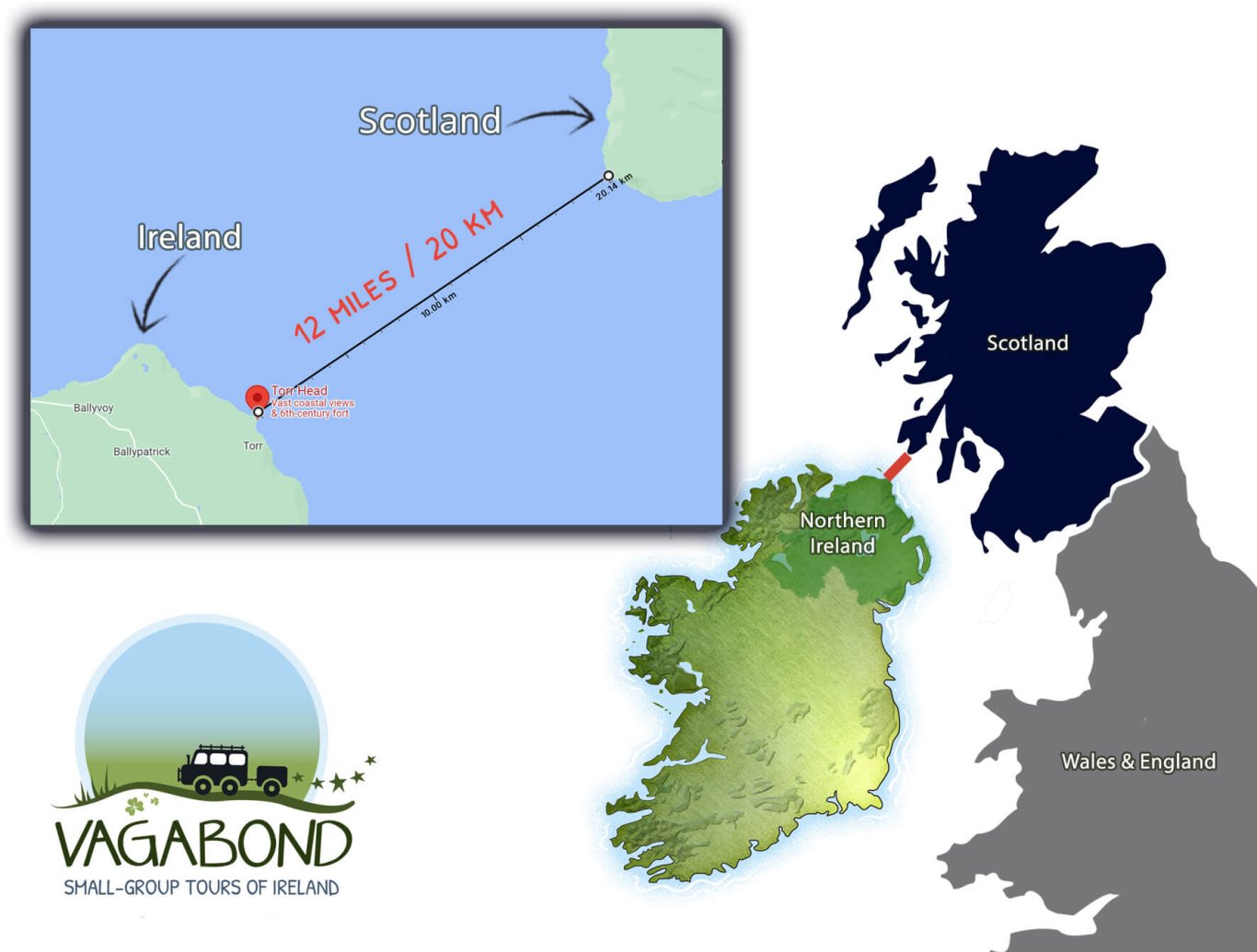
Ireland is roughly the size of the state of Indiana. You can drive from the northerly tip to the southernmost peninsula in about 8 hours; east to west takes roughly 4 hours.
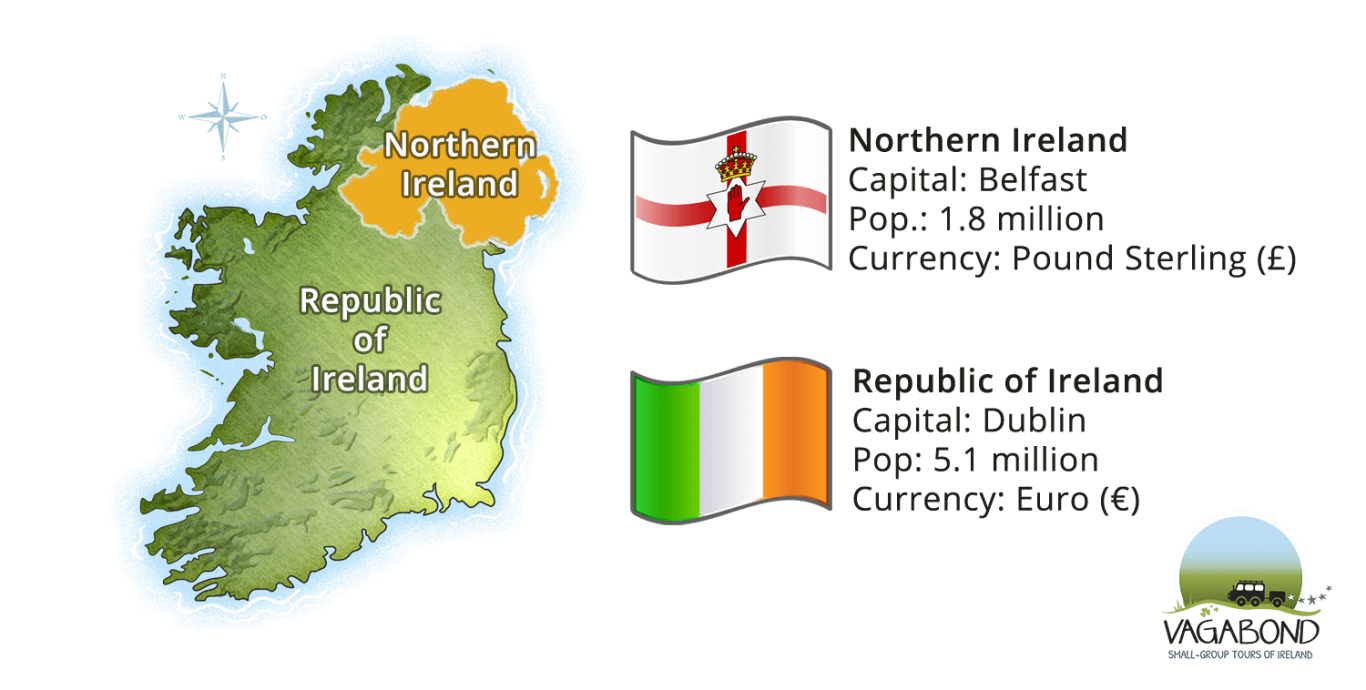
The island is divided into two countries : the Republic of Ireland, which covers most of the island, and Northern Ireland , which is part of the UK.
Known for its stunning landscapes, friendly people, and rich culture and history, Ireland is a must-visit destination for anyone who loves travel.
🤔 What Type Of Ireland Trip Should I Take?
When it comes to planning a trip to Ireland , the seemingly limitless options out there can get confusing.
There's the option to self-drive ; that means renting a car, developing your own daily itinerary, booking your own hotels and familiarising yourself with Irish road rules.
You can also go private. In this case, you and your travel buddies rent the entire tour vehicle and have 100% of the guide's attention and skills to yourself. The itinerary can be completely bespoke or — in the case of Vagabond private tours — a lightly customised version of established tour routes.
Finally, of course, there are our scheduled small-group tours. Our vacation packages have a maximum of 15 guests. Because of this small-group approach, you will be on first-name terms with all of your fellow travellers, not to mention your tour guide.
We book your hotels for you, include all of our favourite attractions in the price and suggest a range of optional activities for you to choose from.
Another choice you'll have to make concerns the level of physical activity. Do you want to experience Ireland's great outdoors — hiking, biking, surfing and horseback-riding?
Or are quaint villages, crafts, culture and castles more your thing?
Thankfully, we offer both types of tour. Our friendly sales team will help you find a tour style that matches your interests and abilities.
Whether you're in a family group or travelling solo , we can help. In fact, our Frequently Asked Questions are an excellent place to start your journey.
Lastly, make sure to read our latest TripAdvisor reviews to ensure Vagabond & Driftwood are the right fit for you.
📅 Best Time To Visit Ireland
There's no bad time to take a small-group Ireland tour!
The Irish climate remains mild all year round. So the best time to visit Ireland depends on what you want to see and do.
Summer in Ireland (June-August) is the most popular time for visitors, with long hours of daylight and often prolonged periods of sunshine. However, popular attractions can be crowded in the summertime and flights are at their most expensive point.
Visiting Ireland in March or April is increasingly popular. Not only is Saint Patrick's Festival in full swing, there are wonderful wildflowers blooming and often surprisingly pleasant weather. All scheduled tours departing in March and April are discounted by 10% versus the May to September rate.
Fall/Autumn is also a great time to explore the Irish countryside and visit cultural attractions. September boasts mild temperatures but fewer crowds than in summer.
In October , the firesides are cosy and the autumnal food on offer is wonderful. Even better, we offer a 10% discount across all scheduled tours versus the May to September rate.
Winter is the quietest time of year, with shorter days and colder temperatures. We take a break from touring between November and February.
Airline prices could have a major bearing on your choice of when to visit Ireland. Check out our guide to booking cheap flights as well as our list of direct flight connections between North America and Ireland.
Lastly, hotels in Dublin raise their rates around major concerts and events. Avoid them for best value. Check our 2024 event guide before you settle on a time to visit.
🧳 Planning for Ireland: Money, Phone, Hotels, Packing
Great, you've decided when to take your small-group tour of Ireland.
Now, what do you do?!
It's time to start planning of course!
Deciding how much money to bring to Ireland should be your very first step. Contact your bank or card provider to check on fees and where is best to exchange currency .
We recommend bringing a limited amount of euros in cash with you. Remember, if you're visiting Northern Ireland, you'll need some sterling (£) in cash too.
Your cellphone is probably the next area to concentrate on. Let your network know that you'll be travelling well in advance of your departure date. You won't want to arrive in Ireland without the ability to call or text home.
Check with your network about roaming fees. Some providers offer roaming deals which work out significantly cheaper than regular bills. Finally, download our recommended free travel apps .
Choose the location of your Dublin hotel carefully if you're taking a tour with us; some hotels and areas of Dublin are more convenient than others for our tour departure point.
Our past guests are very generous with their hard-won travel tips , useful advice and experience. Unsurprisingly, 'What to Pack' is probably the most frequently asked question on our friendly Facebook group . That's why we've suggested this comprehensive packing guide .
🏞️ Where To Go In Ireland
Ireland has something for everyone.
Beautiful islands , off the beaten path peninsulas , vibrant cities , quaint villages and ancient castles .
Our small-group tours visit all corners of Ireland,
Our 5-6 and 7-8 day tours focus on specific regions:
Our 11-15 day tours encompass entire circuits of the island, including Northern Ireland and much of the Wild Atlantic Way .
The Wild Atlantic Way is an extensive touring route. It stretches down the west coast from Donegal to Kinsale and includes many of Ireland's most well-known counties and sights:
- The Cliffs of Moher
- Ring of Kerry
While in Northern Ireland, we always recommend visiting the Causeway Coast; walk in the footsteps of Irish giants at the Giant’s Causeway, without doubt one of the most scenic places in Ireland .
Whether you’re checking off the top visitor experiences in the South East of Ireland or you’re visiting more off the beaten path destinations , there is no shortage of places to explore!
Travel Guide To The Wild Atlantic Way
The Wild Atlantic Way is one of the most spectacular touring routes in the world. Boasting coastal more than 2,500 kilometres (1,550 miles) of stunning coastal scenery along the west coast of the Ireland, it is known for its breathtaking landscapes, rugged cliffs, stunning beaches, and charming coastal towns. The Wild Atlantic Way twists and turns through nine Irish coastal counties, including Donegal, Leitrim, Sligo, Mayo, Galway, Clare, Limerick, Kerry, and Cork.
There are countless jaw-dropping sights along the Wild Atlantic Way that you have to see and plenty of amazing local pubs to check out!
Starting in the south, be sure to experience the rugged natural beauty of the Beara Peninsula in Co. Cork, visit the awe-inspiring Skellig Islands in Co. Kerry and drive along the Ring Of Kerry , offering some of the best scenery in the country.
On our 12 Day Giant Irish Adventure Tour, you will even have a chance to explore Skellig Michael 12km (8miles) off the Kerry coast, where early Christian monks established a monastery 1400 years ago! This UNESCO World Heritage Site was famously used as a filming destination for two different Star Wars movies.
Moving further north you will pass by the world-famous Cliffs Of Moher, pass through quaint Irish villages, and visit the Burren National Park, just one of the beautiful national parks along the Wild Atlantic Way .
Meandering through extraordinary County Sligo , be sure to check out the amazing beaches, soak in a seaweed bath and get out in the water to catch some waves. Sligo is also home to some of Ireland’s most famous poets, rebels and artists all of whom were inspired by the county’s natural beauty.
Voted the fourth best region to visit in the world by Lonely Planet in 2023, Donegal is undoubtedly one of the coolest places on Earth ! Castles, mountains, white-sand beaches, remote islands, world-class surfing, lively pubs and friendly locals all await you in this untouched corner of the country.
You can travel the Wild Atlantic Way from North to South or vice versa. Between each village, the scenery is mind-blowing and is guaranteed to be etched into your memory for ever more.
Travel Guide To Northern Ireland
Northern Ireland is a little piece of heaven!
This heavily underrated destination has everything: incredible music and history, scenery and wilderness, great food and cosmopolitan cities.
There are so many reasons to visit Northern Ireland , it's quite incrediblee. In addition the history and natural beauty, there are countless Game Of Thrones filming destinations to check out, some amazing music and mind-blowing sights like the Giant's Causeway to explore.
Don't take our word for it... see what one family had to say after their private tour of the North with us. And, off course, it's business as usual in Northern Ireland post-Brexit !
Guide to Nature & Wildlife in Ireland 🌼
Welcome to Ireland, a land of rich natural beauty and diverse wildlife.
Our guests LOVE Ireland because of its green hills and clean air. From rolling green hills to rugged coastline, this small island is a paradise for nature enthusiasts.
As you explore, you will encounter vibrant flowers no matter what month you visit. Expect snowdrops in winter, bluebells in spring, foxgloves in summer and vibrant gorse all year round! Spot these Irish wildflowers during your small-group Ireland tour.
Ireland's dramatic coastlines and rugged islands are a haven for seabirds. Gannets, puffins, and razorbills nest on the cliffs, providing a spectacular sight for birdwatchers.
If you're lucky, you might even spot a playful dolphin or a majestic basking shark in the waters below while taking one of our amazing guided boat trips.
Keep an eye out for Irish wildlife on land too too. Meet these adorable animals during your Ireland adventure (while avoiding Ireland's most dangerous man-eaters !).
Venturing into Ireland's woodlands, you'll be surrounded by towering trees and a symphony of birdsong. Oak, holly and hawthorn are three native tree species that dot the landscape, providing a habitat for squirrels, pine martens and woodland birds like the great spotted woodpecker.
Farming and the farming community have been integral to Ireland's way of life and landscapes for centuries. The emerald-green fields, divided by ancient stone walls, are home to a variety of fauna, not least the farmers themselves! We asked one of our more agriculturally-inclined tour guides to tell us about farming in Ireland .
One of our most popular activities is a guided sheep farm tour , featuring a sheepdog demonstration.
On active Vagabond Cultural Adventures, you can also opt go horseback-riding along a scenic beach or up a mountain.
Unmissable Things To Do in Ireland 🛶
Whether you're seeking adventure, cultural immersion or natural beauty, Ireland has something for everyone.
We love getting active in the fresh air as much as much as we relish curling up with a cosy bowl of chowder by a turf fire!
Lace up your hiking boots and explore lush forests, sparkling lakes and rolling hills with this list of fun things to do in Ireland's great outdoors.
Hop on a bike to explore Ireland's amazing countryside — here's our cycling guide — or zip up your wetsuit for a surf along the Wild Atlantic Way .
Even if you're not an adrenaline junkie, adventure still awaits! Learn how you can get your kicks the easy way with our accessible accessible adventure guide .
Step into craft studios to meet artisan makers or get inspired at weird and wonderful local festivals .
If you're a foodie, plan a visit to a food festival or take on one of our recommended guided food tours .
Irish Music, Movies, TV & Books 🎶
Culture vultures alert! Ireland is one of the world's most incredible places to visit if you love your music, cinema and/or literature.
Your trip is the perfect opportunity to understand Irish culture better through the best artists, movies, books and TV shows.
Irish writers and their writing are world famous. Read these books before you visit to really get under the skin of Ireland's history and people
The island has been the subject of many, many films over the years. Check out the best Irish movies to watch at home . And here are some famous films and TV that were shot in Ireland .
Finally, you simply can't talk about Ireland without mentioning music. We have covered this topic in detail.
First, there was our list of 10 essential Irish songs .
Then we did it again .
And again .
And yet again !
There's also the history of Irish music to delve into and a personal musical history from one of our tour guides
So don't you dare leave here without experiencing a traditional Irish music session!
Travel Guide to Dublin 📸
Arriving in a new city can be daunting. You're jet-lagged, the streets are unfamiliar and the food is different.
Luckily, our gateway city Dublin is one of Europe's friendliest and most compact capitals.
We have answered many common questions about Dublin over the years.
First and most importantly, how will you get from Dublin Airport to central Dublin ?
Read our list of non-touristy things to do in Dublin to get you started. How about an award-winning guided cemetery tour ? We promise it's more fun than it sounds! Check out our full list of Dublin walking tours listed here .
Discovering Dublin on a budget is just as much fun as if you're travelling with the company credit card, if not more so. And if you've only got a day in Dublin , here's how we would recommend making your the most of your precious time.
Now you've explored the city, escape it. Dublin sits on a beautiful bay and is ringed by gorgeous hills. Understand the Dublin public transport system and take these 7 easy day trips . We know you'll fall for all those lovely villages and suburbs near the capital!
Eating and drinking like insiders is key to enjoyment of any international trip. So try these sustainability-focused food joints and make sure you also read this list of the best places to eat in Dublin city centre . Then track down a great pint with our recommended traditional Dublin pubs .
All of our small-group tours depart and return to Dublin. That means that it makes sense to stay near our departure point at the Grand Canal Hotel, just south of downtown. While in the neighbourhood, check out these fun local things to do and great places to eat .
What Are Irish People Like? 😉
There's a lot to be learned about Irish people and our everyday habits.
We might appear to be normal human beings at first glance.
On further examination, lots of Irish people talk funny and abide by eccentric rules for tipping .
We also have strict traditions surrounding food and pub etiquette (you should probably memorise all of these pre-trip).
Important to note: we are world champion crisp-eaters and tea-drinkers .
Like any nation, there are certain myths about the Irish that are not 100% true.
Yes, leprechauns exist .
No, not all redheads are from here .
Yes, we love potatoes .
No, not everyone believes in fairies (we can name at least one Irish person who doesn't).
What's Irish Food Like? 🥔
The simple answer is: AMAZING!!
There's never been a better time to experience Irish food.
Start your days on tour with Vagabond by eating the food of kings; a full Irish breakfast . Even better news? All hotel breakfasts are included in our tour prices.
Another food we're famous for is the humble potato .
Nowadays, Ireland has discovered other vegetables too! It's easy to eat healthy, vegetarian or vegan food while touring. Check out these must-munch burgers and our favourite cuisine from around the island . Don't forget to try out these super craft breweries too.
Just like in other countries — *side-eyes at Italy* — Irish people stick to some pretty strict rules when it comes to eating. For example, in Ireland, we always get together at Christmas time to eat ourselves silly .
Get a taste of Ireland at home by trying out these simple and traditional recipes:
- ☕ How to Make An Irish Coffee
- 🍞 Authentic Irish Soda Bread Recipe
- 🍏 Seasonal Irish Apple Crumble Recipe
- 🥞 Simple Irish Pancake Recipe
- 🐟 How to Make Seafood Chowder in 8 Easy Steps
Everyone's got a little Irish in them!
Would you like to learn how to trace your Irish ancestry or discover if your Irish ancestors lived in a castle ?
Unearth Irish genealogy before you arrive in Ireland with our in-depth articles.
Discover Our Small-Group Tours of Ireland

Share this on…

Our Blog categories…
- About Ireland
- Archive | Blog
- Competitions
- Ireland Travel Tips
- Tour Highlights
- All Our Blog Posts
- Top 10 Blog Posts
Here are more articles you might find interesting…
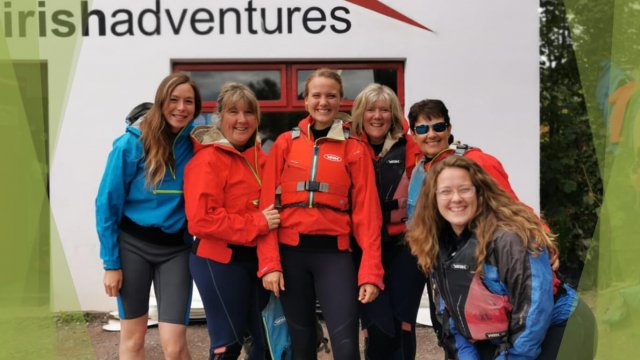
☘️ Worry-Free Bookings. ONLY €250.00 DEPOSIT PER PERSON. See Our Flexible Terms
Skip To Main Content
- Accommodation in Belfast
- Activities & Attractions in Belfast
- Food & Drink in Belfast
- What's On in Belfast
- Accommodation in Derry~Londonderry
- Activities & Attractions in Derry/Londonderry
- Food & Drink in Derry/Londonderry
- What's On in Derry/Londonderry
- Accommodation on the Causeway Coastal Route
- Activities & Attractions along the Causeway Coast
- Food & Drink along the Causeway Coastal Route
- What's On along the Causeway Coastal Route
- Accommodation in County Antrim
- Activities & Attractions in County Antrim
- Food & Drink in County Antrim
- What's On in County Antrim
- Accommodation in County Armagh
- Activities & Attractions in County Armagh
- Food & Drink in County Armagh
- What's On in County Armagh
- Accommodation in County Down
- Activities & Attractions in County Down
- Food & Drink in County Down
- What's On in County Down
- Accommodation in County Fermanagh
- Activities & Attractions in County Fermanagh
- Food & Drink in County Fermanagh
- What's On in County Fermanagh
- Accommodation in County Tyrone
- Activities & Attractions in County Tyrone
- Food & Drink in County Tyrone
- What's On in County Tyrone
- The Giant Spirit Experience Collection
- Northern Ireland Bucket List
- Choose Your Giant Adventure
- Castles & Historic Sites
- Grand Houses & Gardens
- Music & Nightlife
- Causeway Coastal Route
- Cycling & Mountain Biking
- Forests & Parks
- Horse Riding
- Mourne Mountains
- Tours & Excursions
- Walking & Hiking
- Water Activities
- Wildlife & Zoos
- Golf Courses
- Golf Events in Northern Ireland
- Golf Offers
- Golf Itineraries
- Golf Guide for Northern Ireland
- Game of Thrones®
- Experiences, Activities & Attractions
- Family Activities and Attractions
- Luxury Accommodation
- Bed & Breakfast
- Self-Catering
- Camping & Caravanning
- Guest Houses & Guest Accommodation
- Family Friendly Accommodation
- Pet Friendly Accommodation
- Green Accommodation Options
- Family Events
- Sports Events
- Food & Drink Events
- Arts & Theatre Events
- Music Events
- Places to Eat
- Places to Drink
- Michelin rated restaurants
- Tours, Trails & Experiences
- Top 10 Food & Drink Experiences
- Economusees - Artisans at work
- Afternoon tea
- Getting to Northern Ireland
- Travelling Around Northern Ireland
- Vehicle Hire
- Brexit Information
- Covid-19 Information
- Maps & Brochures
- Seasonal Inspiration
- Visitor Information Centres
- Inspirational Itineraries
- Short Breaks
- Family Holidays
- Pet Friendly Holidays
- Romantic Getaways
- Luxury Weekends
Special Offers
- Things to Do
Accommodation

You are here: Home > Plan your Trip > Visitor Information
Visitor Information
Whether you’re looking for inspiration for your next holiday, in the early stages of planning a visit to Northern Ireland, or even if you’re already here and looking for your next amazing experience, we’re here to help.
As the local experts, we’ve got a wealth of information to share with you. We have inspiration on what to do, where to go, where to eat and drink and, of course, where to stay in Northern Ireland.
A quick browse will throw up endless possibilities, from pet friendly accommodation to coasteering destinations to walking trails and 5-star luxury hotels and townhouses.
Here to help you find information and inspiration
We’re always here to help, wherever you are, and whatever you’re looking for. That’s why there is a network of Visitor Information Centres (VICs) located in key locations right across Northern Ireland, so that no matter where you are, you can get the information and advice you need.
You’ll find people happy to help you with advice on what’s happening locally and across Northern Ireland. They’ll point you to the nearest and best activities and attractions, offer maps, brochures and guides to help you on your way, and some centres even sell books, souvenirs and postcards - so you can let friends and family know what a great a time you’re having.
You can contact each Visitor Information Centre by email and by telephone, or just drop in - we’re always ready to help.
- Food & Drink
- Dogs accepted by arrangement
- Dogs Welcome Inside
- Dogs Accepted Inside
- Gym On Premises
- Free (parking charges may apply)
- Car parking
- Off site parking
- On site parking
- Parking (charge)
- Parking (free)
- Restaurant on Premises
- Restaurant on site
- Indoor pool
- Outdoor pool
- Swimming Pool On Premises
- Wi-fi available
Awaken your Giant Spirit

Northern Ireland is easily accessible by air, sea, road and rail. With 3 airports, sea ports and a network of motorways, it has never been easier to get to Northern Ireland. What are you waiting for?

With good roads, great public transport and a range of discount passes, getting around Northern Ireland is a doddle.

Driving in Northern Ireland (NI) is governed by rules set out in the Highway Code and you may find it useful to refer to the Code to better understand how driving here may differ from your own location.

In Northern Ireland, looking after everyone as well as possible is just in our nature. That’s why we want do everything we can to help you prepare for your visit here, ensuring it’s as enjoyable, comfortable, inspirational and memorable as can be. Find out more about our star grading and welcome schemes.
- BREXIT Brexit: Current Information Click below for guidance for EU, EEA and Swiss citizens visiting the UK. FIND OUT MORE
- Contact Tourism NI
- Privacy Policy
- Accessibility Statement
- Terms & Conditions
- Copyright Notice
- Product Owner Login
- Business Events
- Travel Trade

Ratings Powered By

© 2024 Northern Ireland. All Rights Reserved
Don't Miss

NI Spirits Trail

Game of Thrones®

Enewsletter Sign Up

IMAGES
COMMENTS
I understand that by signing up, I will receive personalised email content based on my use of Tourism Ireland's website, emails and Tourism Ireland's advertising on other websites, cookies and tracking pixels. ... Discover the best of Ireland by reading our range of digital brochures with plenty of inspiration, maps and useful tips for your ...
Symbols of modern Ireland include vibrant cities like Dublin and Cork, unique towns and villages, and above all, the cozy pub full of friendly locals. Whenever or wherever you visit, you'll make memories that will last a lifetime. Ireland is a fun place for discovery and adventure.
Ireland's official vacation and travel guide | Ireland.com
Welcome to our Free Travel Guide to Ireland. Here you can find a wealth of free information on all of Ireland's most popular tourist towns, countryside retreats and bustling city areas. To begin, simply select the resort using the list below. Happy hunting!
Rock of Cashel, County Tipperary. 10 Soaring up from the green Tip-perary pastures, this ancient fortress (p335) takes your breath away at fi rst sight. The seat of kings and churchmen who ruled over the region for more than a thousand years, it rivalled Tara as a centre of power in Ireland for 400 years.
Head for the coast and explore beaches, lighthouses and islands as you cosy up in a seaside hideaway. Unmissable experiences See our majestic coastlines, rugged trails, endless beaches and exciting cities. Explore Ireland with its epic mountain peaks, magnificent coastlines, lofty lighthouses and rich greenery. Plan your holiday at home now.
of Ireland holiday Ireland's South East 2020/21 1 FREE Visitor Guide s. WIN an Amazing Holiday Break at a Take our 2-minute online feedback survey, and you could win this fantastic prize. This Daily Adventure guide provides you with lots of great ideas on things to do, see and enjoy during your Ireland
Learn about the diverse landscapes, culture, and history of Ireland before you plan your trip. Find out the best time to visit, how to get there, and what to expect from this comprehensive guide.
Welcome to the Ultimate Ireland Travel Guide, your comprehensive resource for exploring the enchanting Emerald Isle. Ireland is a country of captivating landscapes, rich history, vibrant culture and warm hospitality. From the rugged cliffs of the Wild Atlantic Way to the ancient castles and mystical ruins scattered across the countryside, Ireland offers a myriad of experiences for every traveler.
These top attractions are all too good to put in a strict order. So just think of them as ten of the best. The ten attractions and destinations that you won't want to miss. 1. Dublin City Sightseeing. 2. The Cliffs of Moher. 3. Killarney & National Park.
I understand that by signing up, I will receive personalised email content based on my use of Tourism Ireland's website, emails and Tourism Ireland's advertising on other websites, cookies and tracking pixels. ... Discover the best of Ireland by reading our range of digital brochures with plenty of inspiration, maps and useful tips for your ...
Rough Guides® is a trademark owned by Apa Group with its headquarters at 7 Bell Yard London WC2A 2JR, United Kingdom. Plan your visit to Ireland: find out where to go and what to do in the Republic of Ireland and Northern Ireland with Rough Guides. Read about itineraries, activities, places to stay and travel essentials and get inspiration ...
Our Popular Free Irish Tourist Guide is yours for the taking. Previously sold for US$ 15 the guide is now offered free to download at the link shown below. Over 500 Hotels, Guesthouses and B&Bs listed, County by County, each with a separate 'budget' listing. Packed with useful information such as: Dublin Traffic details, Telephone charges, Tax ...
1 Temple Bar. Top Attraction. Irish Pub Experience. See it on our Tours. Temple Bar is perhaps the most visited district of Dublin, with many tourists scarcely venturing beyond Dame Street and the Liffey which mark the upper and lower reaches of this cultural quarter.
Historical Walking Tour Of Dublin. Goat Boat Tours. Things to see & do Cycling. The Lazy Bike Tour Company Limited. Dublin Discovered Boat Tours. Food & drinkFood & drink tours. Vintage Tea Trips. Things to see & do City tours. Viking Splash Dublin.
Get practical Ireland travel tips, learn Irish slang and even cook up an Irish recipe! This really is the ultimate Ireland travel guide for 2024 and 2025! Ireland At A Glance. 🗺️ Ireland 101. 🧳 Plan Your Trip. 📅 Best Time to Visit. 🏞️ 2024 Bucket List. 📸 Dublin Travel Tips. 😉 Get to Know The Irish. 🎻 TV, Books & Music ...
Round and about - our maps of Northern Ireland tourist attractions. Finding your way around is easy with our tourist map of Northern Ireland. Even if English isn't your first language, we've got maps in other languages too. Whatever your mother tongue, these maps will really speak to your sense of adventure and appetite for exploration.
Visitor Information. Whether you're looking for inspiration for your next holiday, in the early stages of planning a visit to Northern Ireland, or even if you're already here and looking for your next amazing experience, we're here to help. As the local experts, we've got a wealth of information to share with you.
26 April 2024 Promoting Ireland's superb golf and luxury tourism offering in Frankfurt Tourism Ireland hosts golf and luxury workshop for German tour operators. Learn more. 26 April 2024 Tourism Ireland leads sales blitz to the United States 'Best of Ireland' sales mission visits Cleveland, Cincinnati, Minneapolis-Saint Paul and Chicago.